Sports
Frayre and Shafi Shine Bright
Stage 1: Shafi, Laverick Ride to Victory at Lake Perris Time Trial Riverside County, California (April 9, 2025) – Stage 1 of the Redlands Bicycle Classic presented by San Manuel Band of Mission Indians began with the Toyota of Redlands Lake Perris Individual Time Trial. Alia Shafi rode to victory for Fount Cycling with a […]
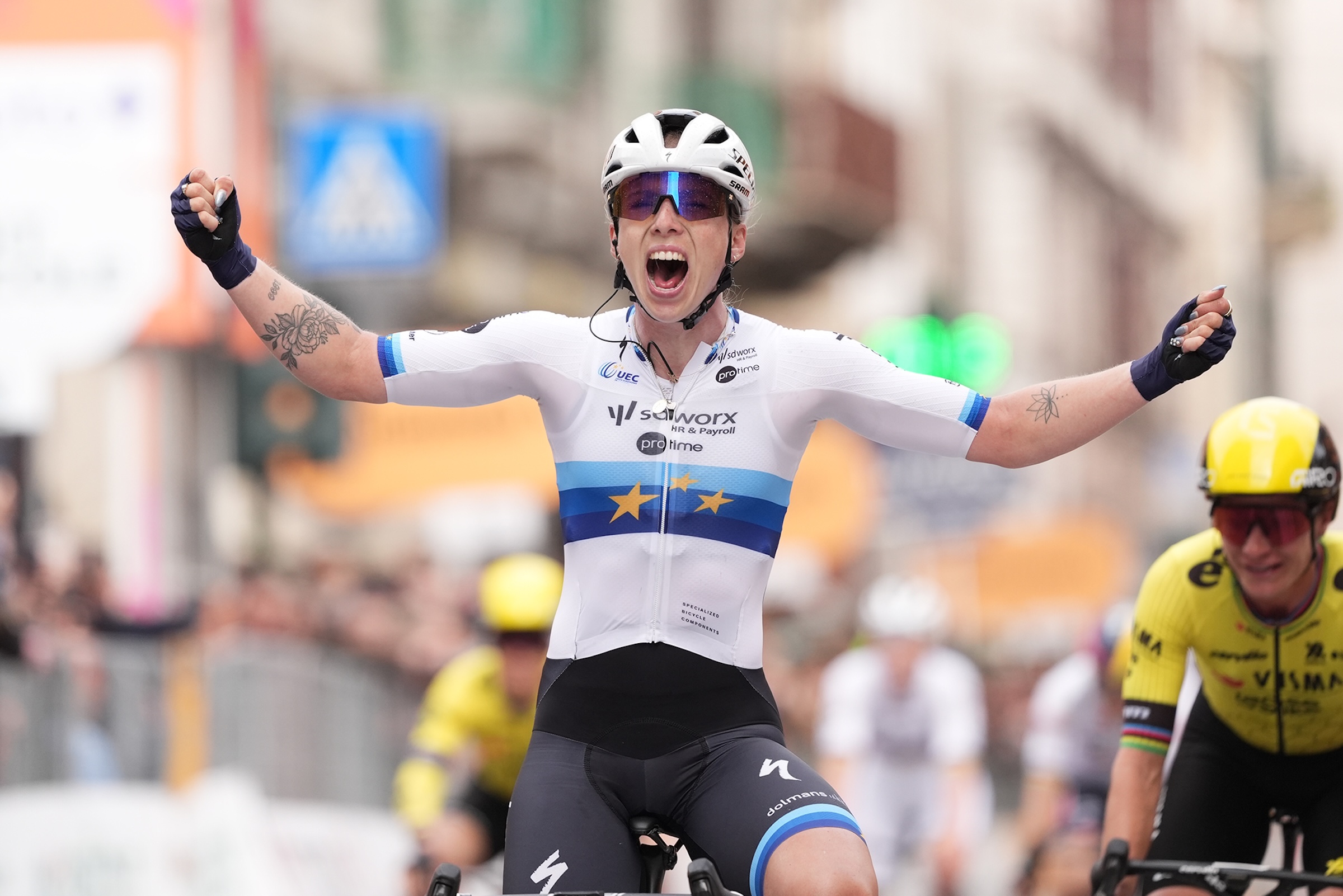
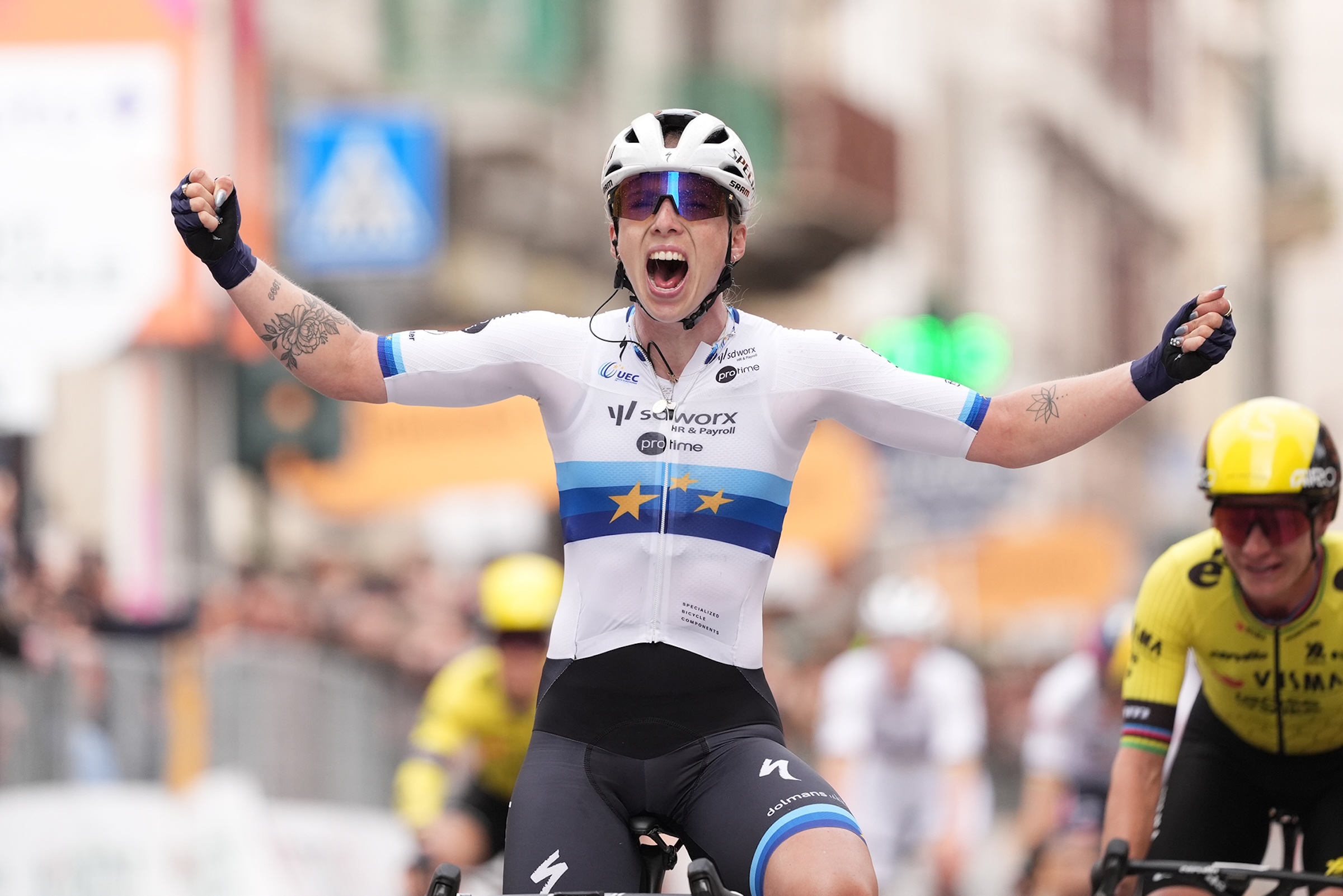
Stage 1: Shafi, Laverick Ride to Victory at Lake Perris Time Trial
Riverside County, California (April 9, 2025) – Stage 1 of the Redlands Bicycle Classic presented by San Manuel Band of Mission Indians began with the Toyota of Redlands Lake Perris Individual Time Trial. Alia Shafi rode to victory for Fount Cycling with a time of 25:04 after finishing second last season, earning the first yellow general classification jersey of the week. Shafi was given the number 301 as the last rider to start after finishing second overall last year. Her teammates would join her on the podium, sweeping Stage 1 with Jennifer Wheeler finishing second (25:28) and Majorie Rinaldo in third (25:43).
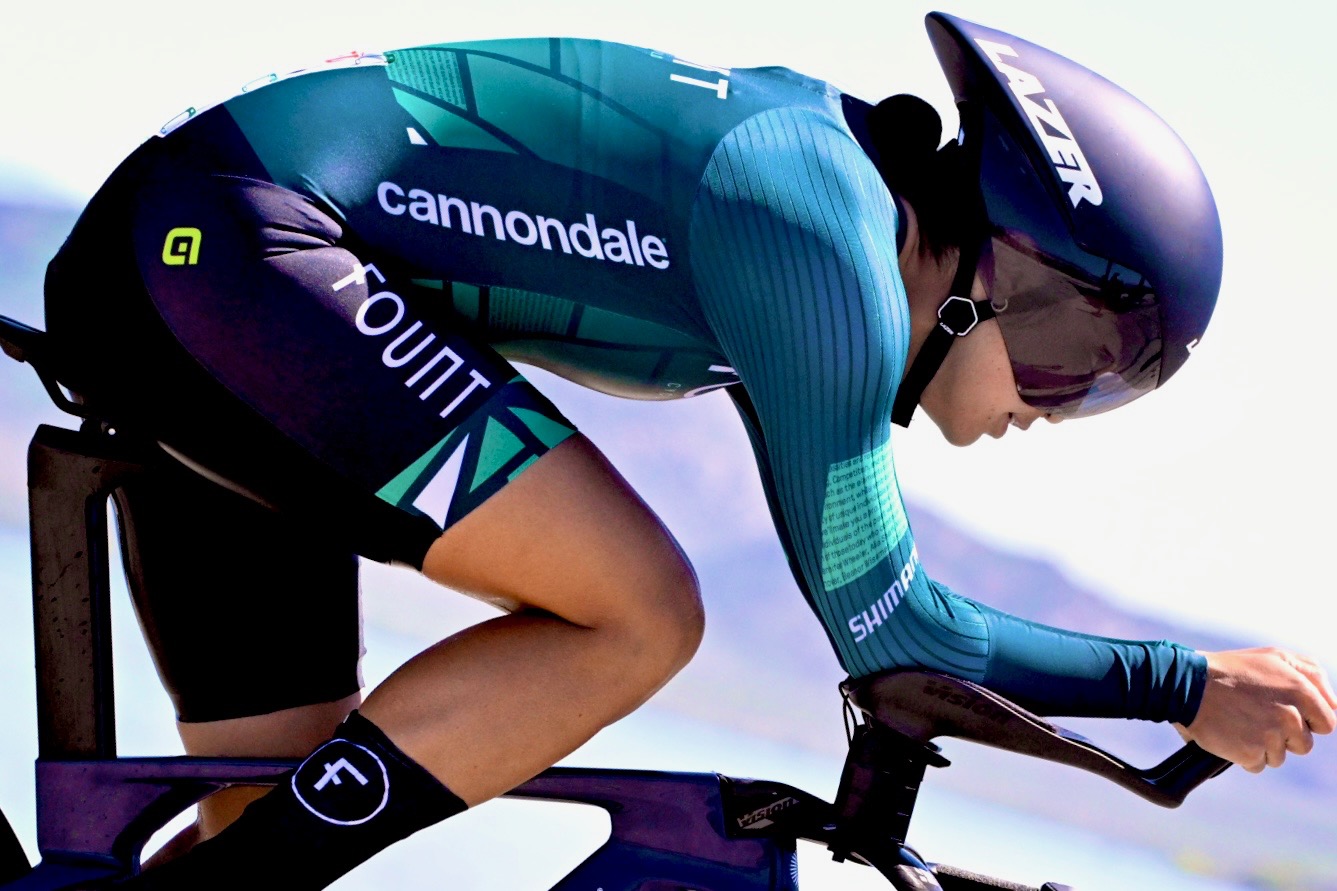
Photo: VeloImages / Redlands Bicycle Classic
The 11.7-mile loop around the lake was the second year in a row the location was used in the 40 years of the Redlands Classic. Riders rolled out the starting house underneath blue skies and increasing heat, with only a slight head wind fighting them to the finish. Temperatures hovered in the mid-80s. However, with half the peloton arriving to California from Northern locations or the East Coast, the warm temperatures were a shock to the system.
“Compared to last year, I felt a little bit more comfortable,” Shafi said after the stage. “I knew I could make a little time and I had a plan; I think I executed it well. This is my third year at Redlands. I’ve been hunting this down since last year, we were so close – shout out to Nadia (Gontova) who crushed it with DNA. We’re coming hungry this year, hoping to keep yellow all week.”
Wheeler has returned to racing, after retiring she focused her efforts on building Fount Cycling Guild with her partner, David Richter. They guided and coached a number of athletes that came through their program including WorldTour rider Veronica Ewers. They would later meet Shafi, recognizing the talent of the collegiate rower. After directing Shafi the last few seasons, Wheeler wanted to take it a step further and race alongside her.
“We brought Alia up since she was a noob and didn’t even know how to shift a bike,” Wheeler said. “I don’t know how more years she’s going to be racing, but I really wanted to come back and be with her to support her in the peloton. That was my primary motivation this year to get back to racing…its just such a great team. They motivate me to be my best so I’m really happy.”
Madison Gallagher (Team Winston Salem) had been timed as finishing third upon crossing the finish, however, she quickly informed the officials she had taken a wrong turn out on course. After a delay due to the men’s start, the correction confirmed Rinaldo in third. Shafi would double up with a lead in the sprint points classification, sharing the jersey with Wheeler for stage 2. 17-year-old Canadian Sidney Swierenga (TaG Cycling) also had an incredible ride, finishing 5th in 25:58 to earn the newly minted Best Young Rider jersey for the pro women.
Pro Men’s Race
As the women celebrated their podium finishes, the pro men were off as the temperatures began to rise. Cole Owen with Team Winston Salem would clock the first fast time of 22:17, a few seconds shy of Tyler Stites 22:20 winning time last year. Hugo Scala, Jr. would start less than 10 minutes behind Owen, as the first rider for Project Echelon out of the starting house. His 21:58 time would hold for much of the day, hoping to take the GC lead for his team.
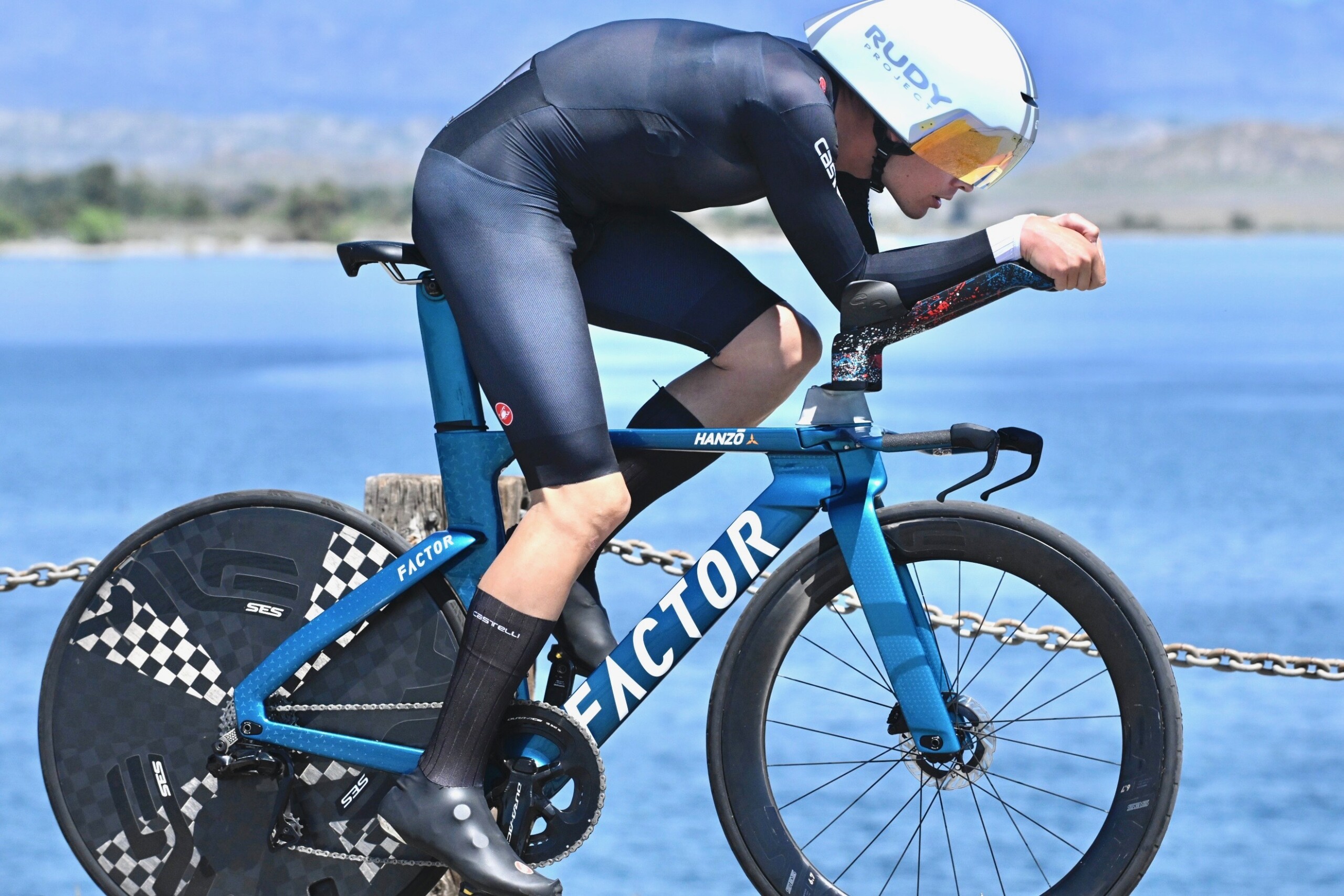
Photo: ©Veloimages
Joe Laverick was among the final 15 riders to finish when he stopped the clock at 21:50, the only other rider to join Scala in finishing under 22-minutes, winning the stage. Eric Brunner (Competitive Edge Racing) rounded the podium in third with a time of 22:01.
“It was hot, very, very hot,” Laverick said following his victory. “We’ve done a lot of recon laps the last three or four days, so it was kind of nice to put it all together. I’ll be honest, I felt absolutely horrendous for half of the day. I crossed the line and luckily I heard I got the fastest time. I just kept my fingers crossed, hoping the other guys wouldn’t catch me and kept yellow.
“I’m only guest riding for the Good Guys team, but they’ve looked after me like I’m one of their own,” Laverick added. “Tomorrow is a big day. Based on how Project Echelon rode last year, I know they’re gonna throw the kitchen sink at me, both tomorrow and the next four days. The circuit at the bottom is going to change it a bit, but at the end of the day, it’s a power test until the top of the climb. Hopefully, I can out climb a couple boys….we shall see.”
Redlands has become known as a land where legends are born. Team California’s Elouan Gardon is one of many examples we are sure to witness this week. Gardon races for the US National Paralympic Team, having won a bronze medal at the 2024 Summer Games in the men’s pursuit C5 4,000-meter individual pursuit para-cycling track event. He followed that performance by setting a new course record at Phoenix’ Valley of the Sun stage race this past February. The 18-year-old would finish 7th on the stage Wednesday, after sitting second for most of the day.
“It was fun to get out here, even though it was hot and a little different than Washington,” Gardon said. “I enjoyed the technical aspect of it and the little climb at the end; it was a nice length. This is my first race with Team California, I have only been with them for a week. I just want to do as well as I can, defend this jersey, and do well for the team.”
Thursday is expected to be the hottest day of the week in Southern California, with temperatures nearing 90 degrees. Only eleven seconds separates the top three on GC. Laverick’s teammate last year, Cole Davis, won the stage giving him confidence leading into a tough battle in his defense of the yellow jersey. The pro men will begin their 75.5-miles with 10 laps around the newly minted circuit before heading up the long climb to the Onyx Summit. The women will soon follow with six laps of their own before they face the long, steep ascent to the top. Time will tell if the new circuit hands over the battle of a whittled down peloton race organizers are hoping for.
Stage 2: Shafi Celebrates Another Stage Win, Extending Overall GC Lead
Big Bear, California (April 10, 2025) – Alia Shafi notched another stage victory, crossing the line solo atop the Onyx Summit for Stage 2 at the Redlands Bicycle Classic presented by San Manuel Band of Mission Indians.. The Fount Cycling Guild rider extended her overall lead to over a minute on GC. SpeedBlock pb Terun rider, Kira Payer, finished shortly behind Shafi in second, earning the Queen of the Mountains jersey for her efforts. Best Young Rider Sidney Swierenga rounded the podium in third, for the second day of racing.
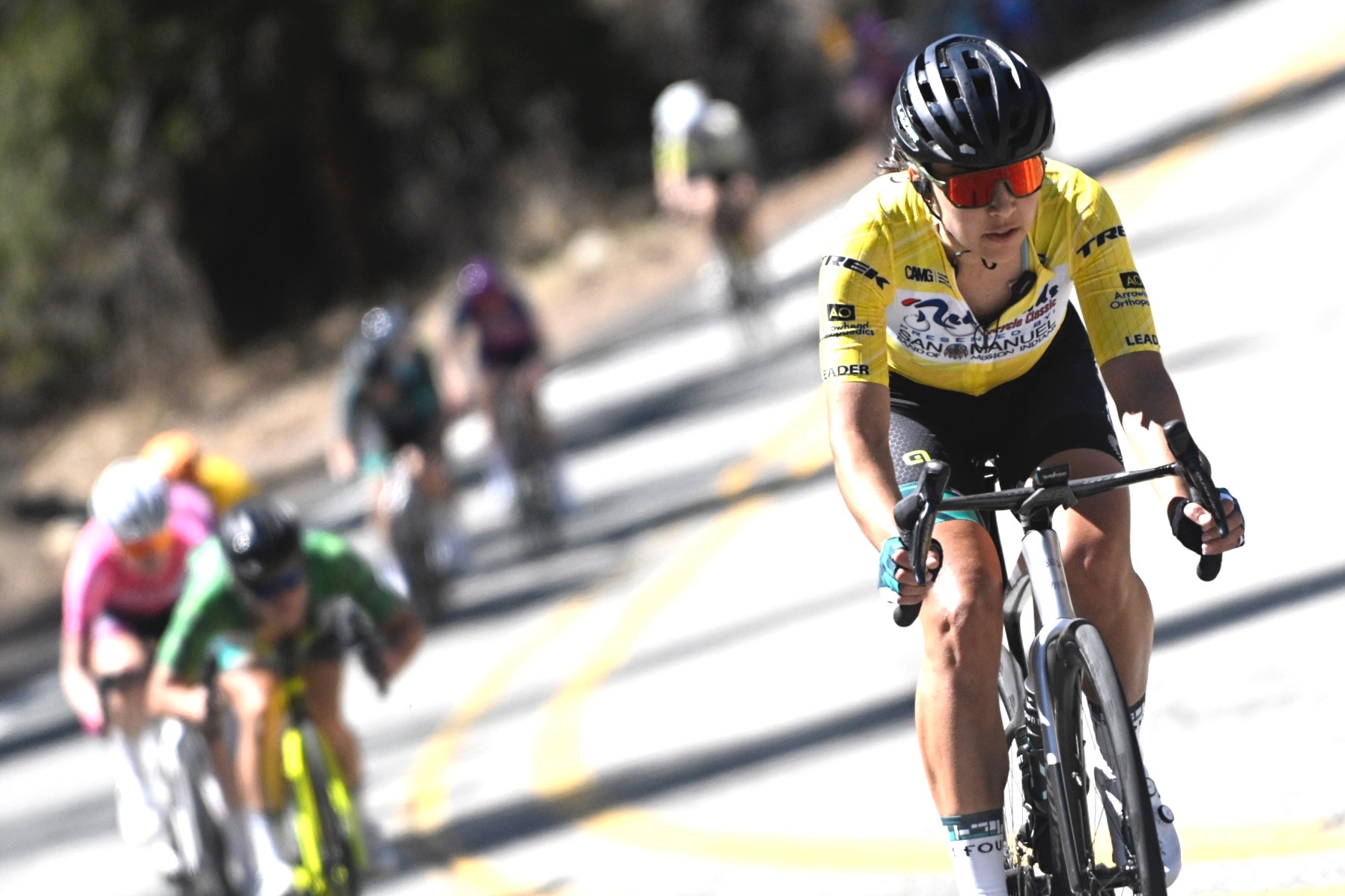
Photo: © VeloImages / Redlands Bicycle Classic
The pro women set off for Stage 2 Thursday, completing six laps of the new circuit that was added this season, hoping to split the peloton prior to reaching the foot of the summit. Anticipating the long climb ahead, the women’s peloton stuck together, waiting for the imminent attacks.
Eventually, the winning move would launch in the feed zone midway up the climb. Kira Payer (SpeedBlock p/b Terum) and Shafi gained some distance, setting a pace others found too difficult to keep. The battle continued between the duo until Shafi gave a final jump to drop her breakaway companion and post for the win.
“The altitude was really tough, you could feel it in that last 10KM,” Shafi said. “Kira [Payer] was super strong, she tried to launch a few attacks, but I held her wheel. We went basically up to 250m together until I went. Big shout out to her, she is super strong and I had lots of fun racing with her today.”
“The team crushed it today. We had roughly seven girls out of about 25 or 30 towards the end,” Shafi continued. “They controlled the pace and protected me well. It went according to plan. It’s awesome to see us come out after a couple of years coming so close.”
Last season Payer contracted Long-Covid and admits she thought she would never be able to race again.
“Fount and I ended up on the descent and I hopped on to the train. As soon as the speed dropped, I blew it up a bit,” Payer said. “Eventually, Alia and I traded pulls which was able to drop the other girls. Sydney bridged up to us with a super strong ride. I put in some digs to try and shake Alia. It cracked Sydney but ultimately Alia outsprinted me at the end.
“My plan was to go for it from the bottom. My girls did an amazing job keeping me cool and hydrated,” Payer added. “This was a pretty big day for me, because last year racing this stage I realized I had Long-Covid. I spent the entire year until September recovering from Covid. I didn’t know I would be able to race again, so to come back a year later and feel like myself again is a pretty big achievement for me.”
The classification jerseys shuffled around with Kendall Ryan taking over the Sprint Points Classification, Payer taking the first Queen of the Mountain jersey of the week, while Swierenga maintains the Best Young Rider jersey, and Shafi in yellow.
Pro Men’s Race
The men began the day early, starting their stage at 9:30, facing 10 laps of the added circuit before facing the climb. The circuit saw several crashes and extensive action at the front of field, desperately attempting to set a breakaway. Multiple riders and teams were in the mix. During the last two laps riders were picking up the pace and establishing a front group with roughly 35 riders.
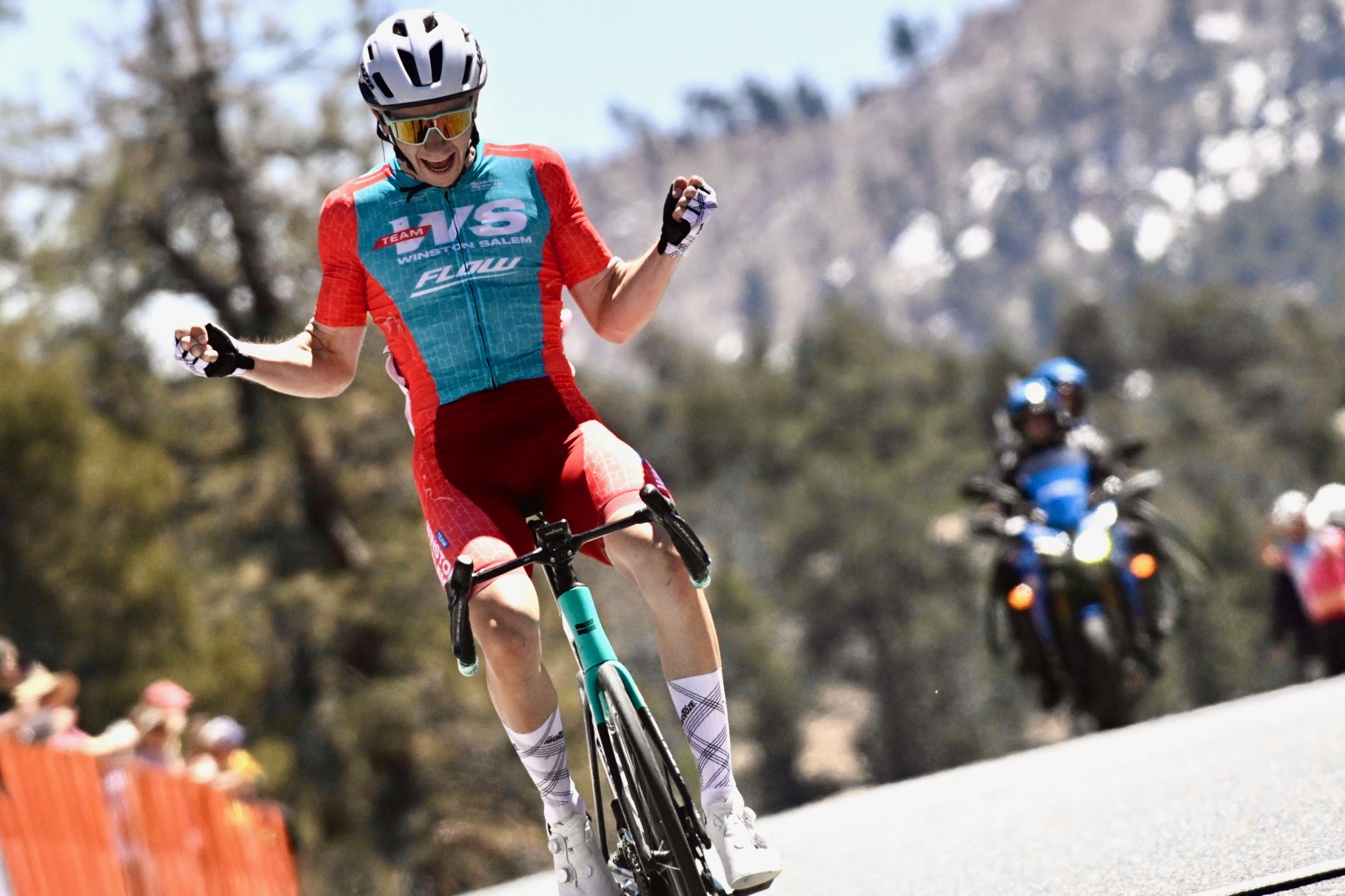
Photo: ©Veloimages
Little by little the group split up and the front breakaway was left with a handful of riders, including Ricky Arnopol (Project Echelon). Owen Cole (Team Winston Salem), Alex Gil (Canel’s –Java), and Stephen Schaeffer of Llandis Trek. Around 30km to go, Arnopol launched an attack with Gil countering. The duo gained a slight advantage that would balloon to over a minute ahead of the stragglers behind them.
Owen Cole (Team Winston Salem) set his pace in the chase group behind, slowly gaining time and would eventually catch and drop the two leaders to reach the finish solo, celebrating his victory and taking over the yellow jersey. Arnopol would finish second, securing his lead in the King of the Mountain classification, with Luke Elphington in third for Kelly Benefits Strategies.
“I wasn’t trying to get the KOM, I really wanted the win,” Arnopol said. “I didn’t really get any help, it was just me and one other guy (Gil) for the entire thing, and then I was solo for the last 25km. I got caught with a kilometer to go. Owen[Cole] was just stronger and I couldn’t stay on the wheel. I just ran out of legs at the end. I got second which is a bummer, but I guess it was a good day.”
At about the midway point up the climb, Arnopol had two other teammates in the chase group, including Hugo Scala, Jr. who had been second on GC after the stage 1 time trial. Unfortunately, Scala had suffered a front wheel puncture and shortly there after, slide and crashed. The team would later report that Scala escaped any major injuries but was forced to abandon the race.
Meanwhile, as the Arnopol and Gil duo were seeing roughly 20km to go, Gil began cramping from the heat unable to keep Arnopol’s wheel. He would try to regain the distance lost but would eventually finish outside the top 20.
Maintaining his rhythm, Cole had Arnopol in his sights, and would catch his wheel within 3km to go, eventually dropping him to go on for the win. Eder Frayre of Golden State Blazers was also close behind but ran out of real estate, finishing fourth on the stage.
“There weren’t many thoughts in the final kilometers, other than trying to keep breathing,” Cole said at the finish. “I had my guys yelling in my ear the entire way, that was the only thing keeping me going at that point. Just trying to go all in. We went really early at the bottom of the climb. We started pushing the pace in the main peloton. A couple of us got away and just went at it the entire day. I had a minor crash in the circuits at the beginning. My teammates were amazing and brought me back up, luckily everything was okay.”
Stage 3: A Day for the Break – Fuller takes the stage, Frayre climbs into GC Lead
Redlands, California (April 11, 2025) – Cyclesport.com’s Quinn Felton dropped his breakaway companions within the final 500 meters to steal the victory on Stage 3. The new circuit at Crafton Hills proved to be one that lent itself to explosive racing, with teams trying desperately to establish a breakaway in order to gain time to what has become a tight race for the overall GC.
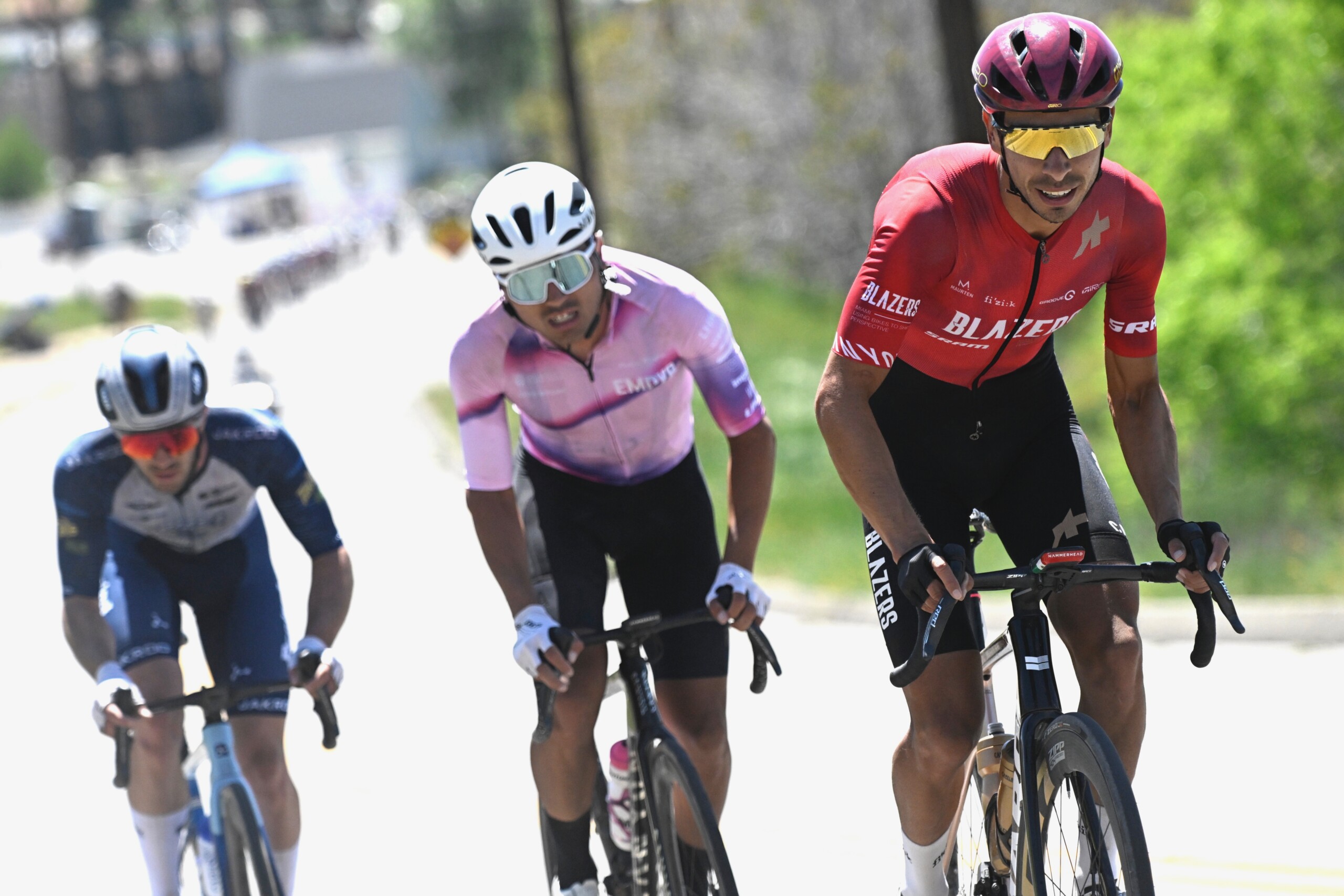
Photo: ©VeloImages
”It was a fun new course, definitely as hard as we thought it was going to be,” Felton said after winning. “The gravel section was not as sketchy as we thought it would be. It was still a very hard course in the heat today. The team plan was to allow the first break to go, letting everyone gas themselves before chasing back. We countered that and it worked out perfectly.”
Kieren Haug (Project Echelon) was second, while Eder Frayre was third overall. Due to time bonuses that were offered at the finish for the top three finishers, Frayre earned enough bonus seconds crossing the line in third, to earn his first yellow jersey of his nearly decade-long career.
“It was really a hard race and hard course but we were ready,” Frayre said. “I’m in really good shape. We had a good plan coming into the stage, but then the breakaway started to go. I told my teammates, ‘we need to go full gas into the climb,’ so they made a great lead out for me from the bottom to almost the top.
“Nearing the end of the laps, and once I had joined the break, they knew I was the biggest GC threat. I just rode as hard as I could until the final.”
The GC standings were so close, it took some time after finishing for the judges to calculate everything properly. Frayre was awarded the yellow jersey in the end by just eight-seconds, with two stages remaining – The Downtown Crit, and the infamous Sunset Loop circuit.
“This all means so much,” Frayre said recounting what Redlands Bicycle Classic has meant to his professional career. “I started racing here in 2010 when I was practically a junior. It was my first race with the professionals. It was really hard work, but its one of my dreams is to win Redlands before I retire. I have a really big opportunity this weekend. I want to keep this jersey until the final. I’m so thankful to my friends, family, and people in my life.”
The Redlands Classic race organization added the new route for stage 3, to replace the Highland Circuit. The 250m gravel section nearing the halfway point of each lap, looked like Paris-Roubaix, as the riders became lost in the dust all the wheels were kicking up. They would appear out of the clouds of dust to prepare to come around, time and time again.
Fount Cycling Guild continues to dominate Redlands, earning another stage win with Stovar
In the women’s race, Fount Cycling Guild continues to dominate the competition, after their third stage wins in as many days. This time it was Ellexi Stover who took the victory for the team, with the yellow jersey, Alia Shafi immediately behind. Stover had been busy protecting Alia from other attacks and the elements going through the gravel section. At roughly 100m to go, Shafi sat up to watch her teammate cross the finish with elation.
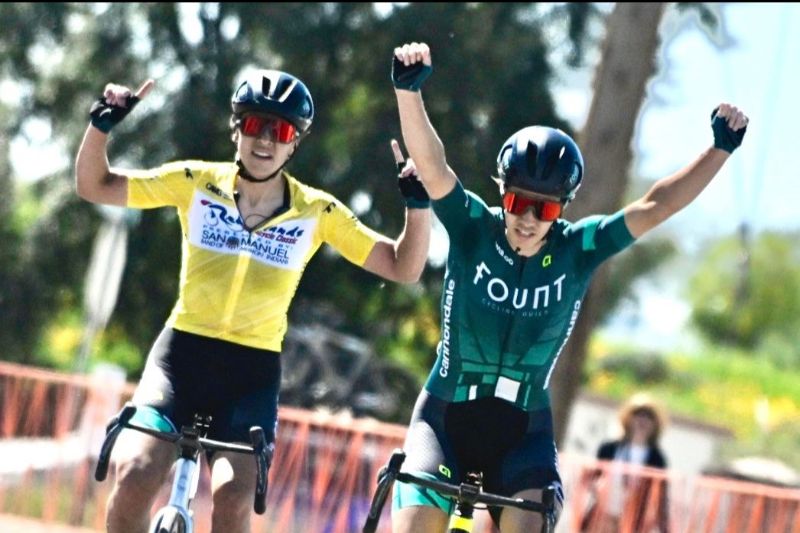
Photo: VeloImages / Redlands Bicycle Classic
Several groups had tried to establish a breakaway with no result straight from kilometer zero – there had been no neutral roll out on Friday.. A few laps later and five heavyweights had left the field behind in their wake. The breakaway included all but one of the leader jerseys – GC Leader : Shafi, Kira Payer, Leading Mountain classifications, and our Best Young Rider, Sydney Swierenga,
Time bonuses were awarded both at the finish and with four laps to go. Shafi remained calm and cool amidst several attempts at isolating her. She had several teammates trying to make the bridge up to the front of the race. Ellexi Stovar (Fount Cycling) was the only teammate who managed to make it. breakaway had consisted of 5 riders all together.
Payer had stuck with them most of the way, in order to fight for QOM points since earning the QOM jersey on stage 2. She increased her QOM lead to 41 points ahead of Shafi with 31.
Stage 4: Summerhill and Shafi Triumph in Downtown Redlands
Redlands, California (April 12, 2025) – Danny Summerhill took home a thrilling win for his L39ion of Los Angeles team today after a nail-biting 90-minute criterium in downtown Redlands, Calif.
The 36-year-old Colorado-born veteran stunned a stacked L39ion of Los Angeles and Golden State Blazers team by out-sprinting Jim Brown (Golden State Blazers) and Ryan Gorman (Cyclesport.com) to take victory.
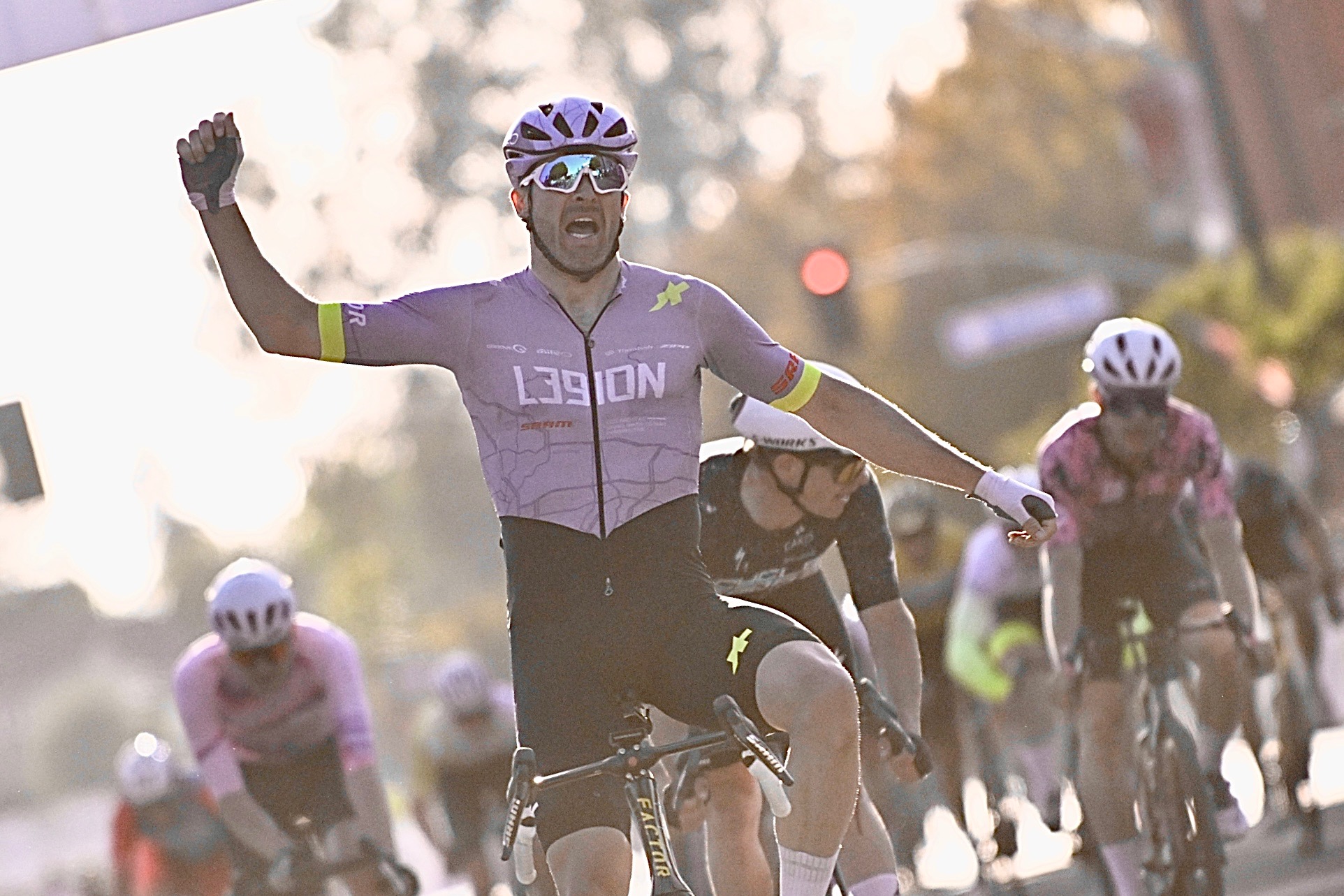
Photo: © VeloImages / Redlands Bicycle Classic
Eder Frayre (Golden State Blazers) stayed out of trouble to retain his lead in the overall competition. He now sits 10 seconds ahead of Quinn Felton (Cyclesport.com). Owen Cole (Team Winston Salem) is third at 1’04”.
“This has been a pretty trying week,” Summerhill said at the finish. “But I’m really happy that the team, as few of us as there are now, were able to pull that (win) out today. I attest that whole sprint to Robin (Carpenter) and the strength of that man. He stayed away for pretty much the majority of the race, which meant that myself and Alec (Cowan) really didn’t have anything to do apart from stay safe and stay at the front of the race. I really owe a lot to Robin and Alec.”
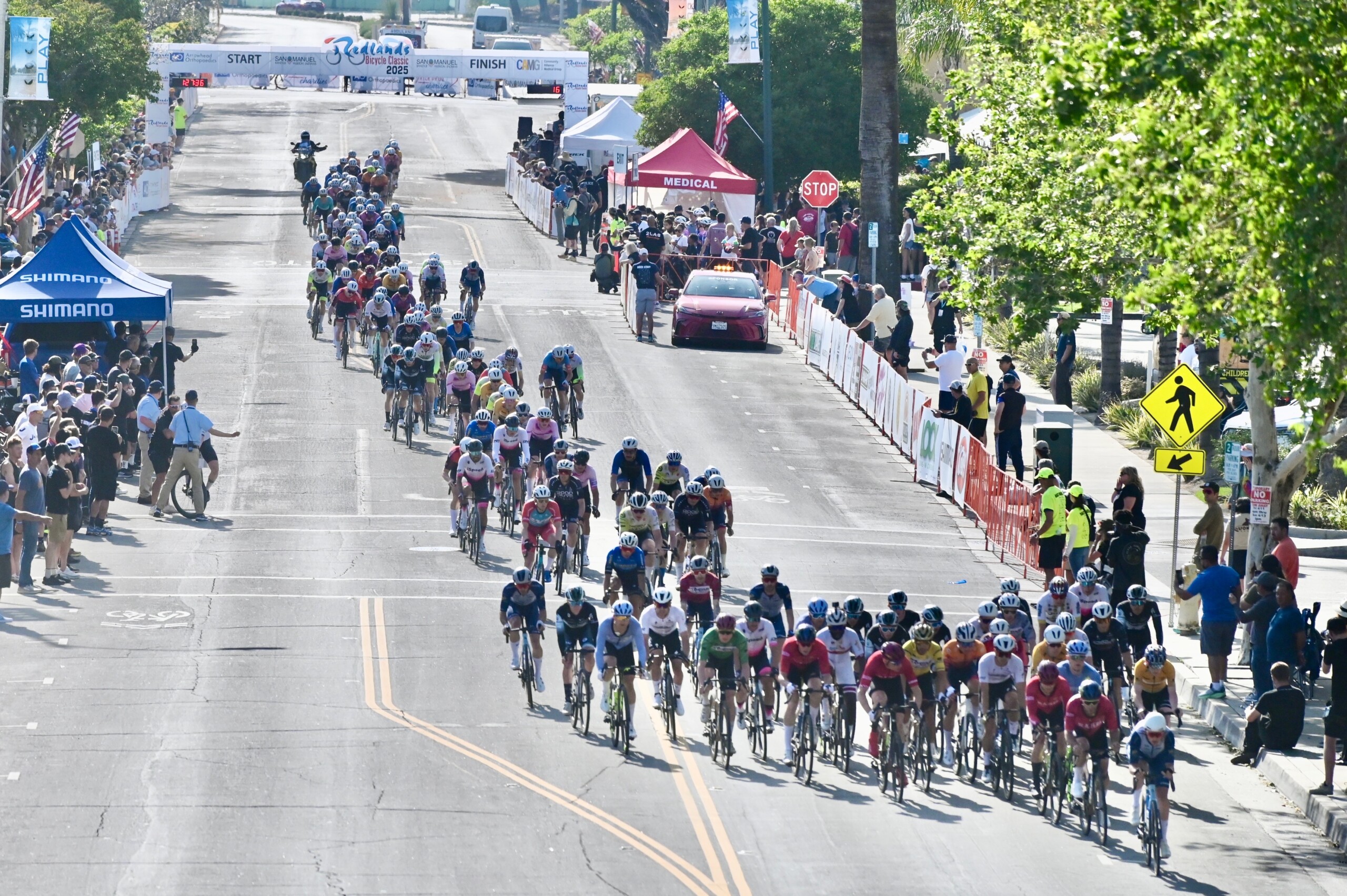
Photo: © VeloImages
From the gun, the Golden State Blazers took over control of the 132-rider strong peloton as it snaked around the one-mile technical criterium, allowing several early moves from Summerhill and Luke Elphingstone (Kelly Benefits Cycling), to gain some traction for a couple of laps, however, despite the lead changing hands several times, the Blazers did swift work of neutralizing the threats.
That was until Ben Stokes (Kelly Benefits Cycling) launched a searing attack that caught the bunch asleep during a lull at the race’s midway point. Sensing an opportunity, Robin Carpenter (L39ion of Los Angeles) bridged across to the 20-year-old. Together, they built up a threatening lead of around 20 seconds before the sprinters’ teams turned on the gas, anxious to deliver their fast men to the line before the time ran out.
Carpenter had other plans, however, and courageously held off the locomotive-like peloton until two laps to go. From there, Summerhill used his experience as a veteran of the sport to position himself for success in the finale.
Heading into tomorrow’s finale, Jim Brown (Golden State Blazers) has all but sealed his lead in the points competition with 40 points. Sebastian Brenes (Canal’s – Java) is sitting second with 19. The king of the mountains classification remains the same as Stage 3, as no points were available today. Richard Arnopol (Project Echelon) is currently first in the climbers competition with 28 points ahead of Luke Elphingstone’s (Kelly Benefits Cycling) 22 points.Cole Owen (Team Winston Salem) will wear the best amateur jersey heading into tomorrow’s race.
Women’s Race
In the pro women’s criterium, Alia Shafi (Fount Cycling Guild) continued to showcase her incredible yellow jersey caliber form with a third win at the 39th edition of the Redlands Bicycle Classic. The 29-year-old overall race leader attacked with five laps to go of the 75-minute criterium and held off a disorganized peloton for an impressive solo victory. Her teammate, Jennifer Wheeler won the reduced bunch sprint for second and points leader Cassidy Hickey (CCB p/b Levine Law Group Cycling) rounded out the podium in third place.
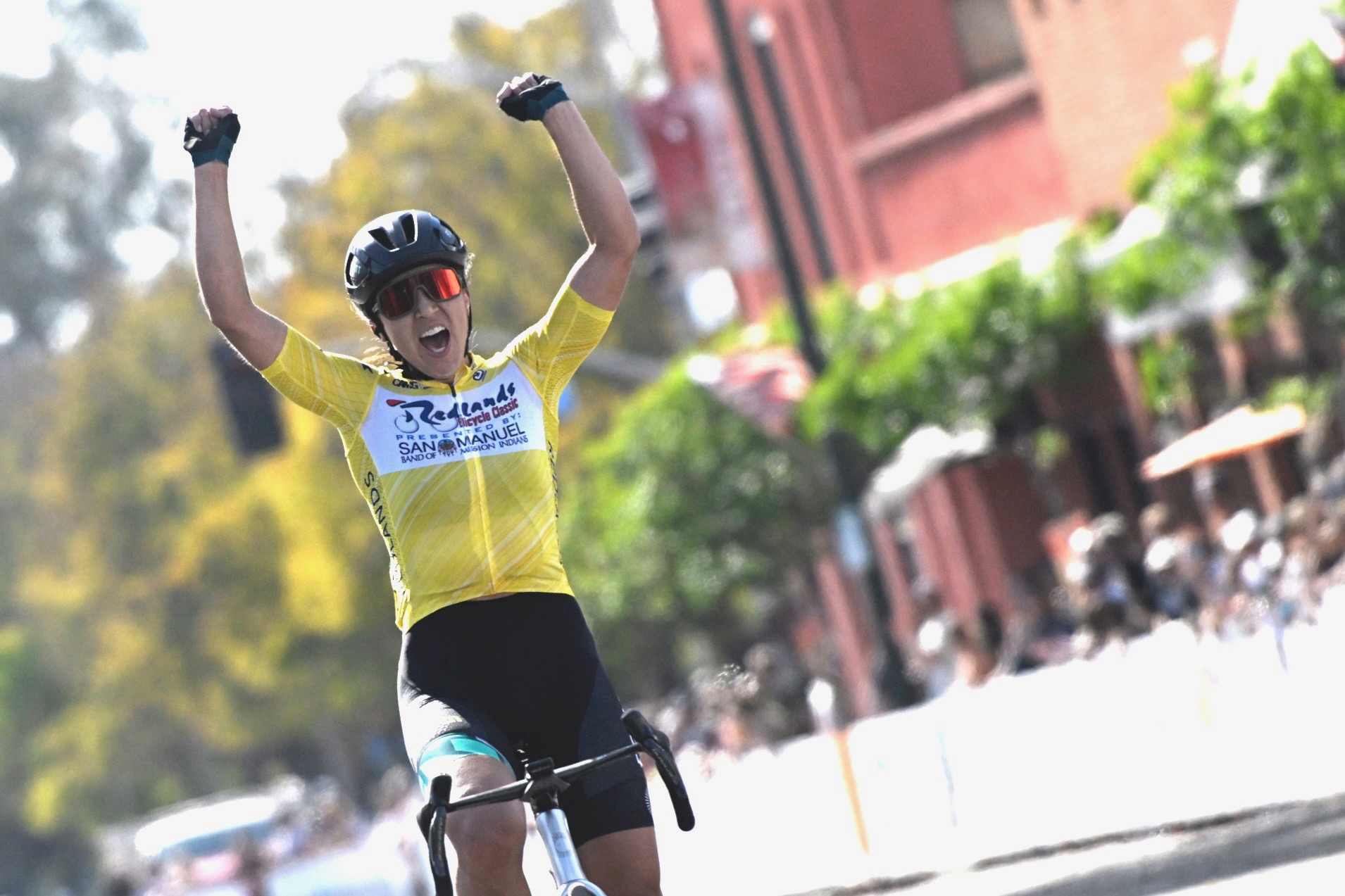
Photo: © Veloimages
“I just saw a moment to go and I took it,” Shafi said. “I’ve been with this team for five years and I owe it all to (Jennifer Wheeler).”
Attacks set the stage for a lively race straight from the start, with Kendall Ryan (L39ion of Los Angeles) and Brooklyn Raddin (Fount Cycling Guild) stirring up the tempo in the opening laps. Most moves were short-lived; however, due to the diligence of the Fount Cycling Guild squad, they were interested in keeping Shafi out of trouble and perhaps prompting a later attack from the eventual winner.
After the second intermediate sprint, which saw Hickey pick up the maximum points on her way into the green jersey, the elastic finally broke. Hickey and Andrea Cyr (Fount Cycling Guild) shifted their sprint momentum into a strong breakaway and gained a maximum of 20 seconds for several laps before the inevitable catch.
With five laps to go, the yellow jersey took off from the bunch, and no one had a response. Safi quickly gained 30 seconds and held it to victory.
Shafi leads the general classification by a margin of 2’25” ahead of Canadian Sidney Swierenga (TaG Cycling Race Team), the current best young rider. Third on GC is the leader of the queen of the mountains classification, Kira Payer (Speedblock pb Terun), 2’29” in arrears. Third on stage 4, Cassidy Hickey (CCB p/b Levine Law Group Cycling) claimed enough intermediate sprint points to overtake Ellexi Snover (Fount Cycling Guild) in the points classification.
Stage 5: Holly Breck Takes Final Stage; Shafi Retains Leader Jersey
Redlands, California (April 13, 2025) – Holly Breck (L39ION of Los Angeles) stormed to victory in the elite women’s finale, claiming the top spot on the podium ahead of Cara O’Neill (Team S&M CX) and overall race leader Alia Shafi (Fount Cycling Guild) in a reduced field sprint.
“I can’t believe it, honestly,” Breck said. “I’m at a loss for words. I’ve never made the circuits before, so to win it is unreal. It’s kind of all a blur, but I knew I had to be patient. Fount’s been riding strong all week. They had a good lead-out going, but I knew when I had to jump, and that was my last shot. Wow.”
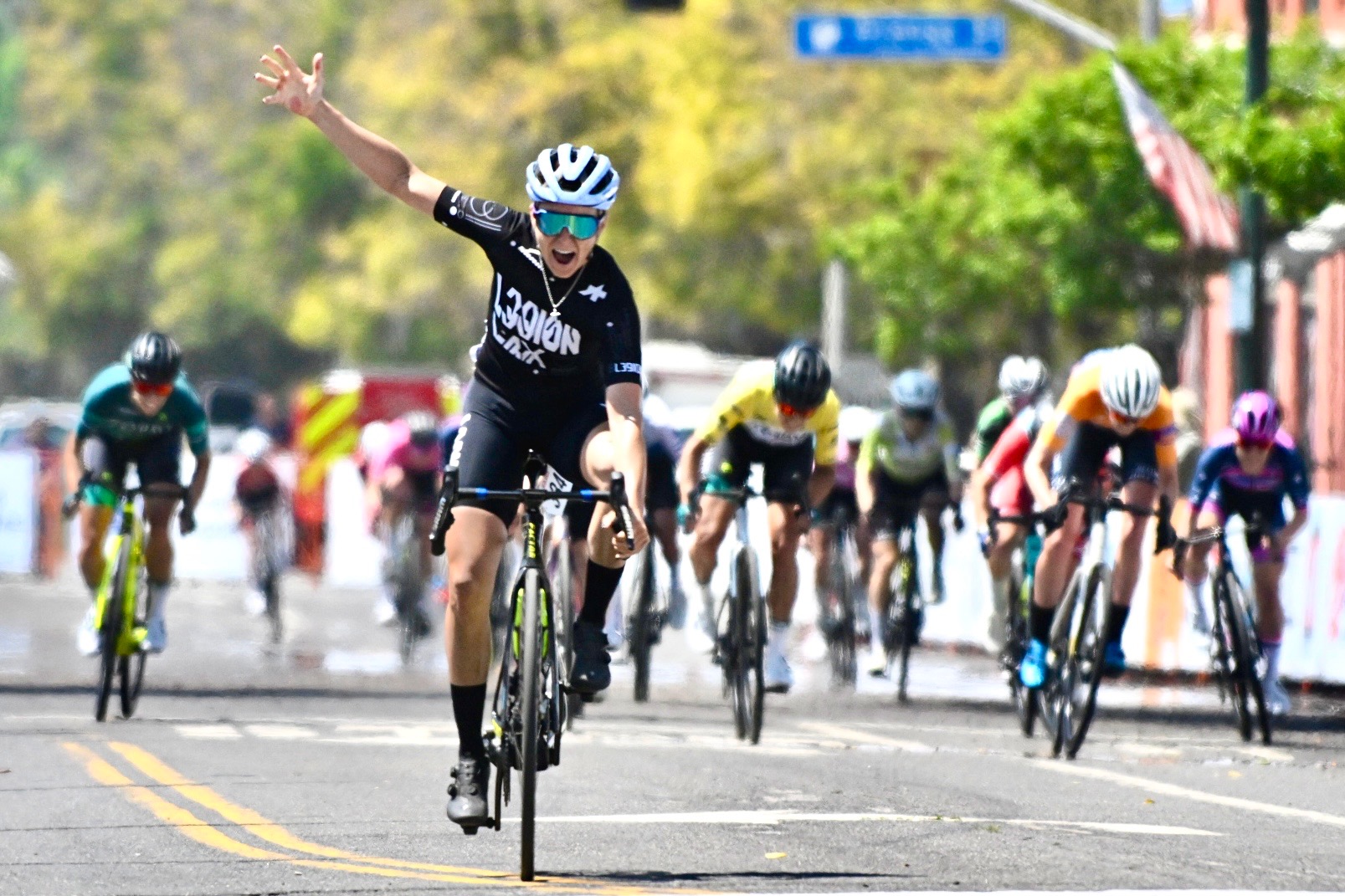
Photo: © VeloImages / Redlands Bicycle Classic
The 68.1-mile stage began under sunny skies and temperatures in the mid-70s, a slightly cooler departure from previous stages. After a nervous start that saw the peloton hesitate to commit to an early break despite several attempts by Winston Salem Cycling, the eventual best amateur winner, Sidney Swierenga (TaG Cycling), attacked with three laps to go and gained enough daylight to enjoy a few laps solo. However, the move was reabsorbed as a bunch sprint seemed more and more imminent.
Third on the day, Shafi easily cemented her lead in the overall competition, claiming the biggest win of her career by 2’29” ahead of 17-year-old Sidney Swierenga (TaG Cycling). Queen of the mountains jersey winner Kira Payer scooped up the final podium placing, finishing 2’36” down on the winner.
“I’ve been aiming for Redlands for a couple of years now, so it feels awesome to finally get it, and the team worked so well together, and we’re just so happy that we pulled it off…I continue to think Redlands is my favorite race,” Shafi said.
Scott McGill Seals Stage 5 of Redlands Bicycle Classic; Eder Frayre Secures Overall Victory
In a thrilling conclusion to the 2025 Redlands Bicycle Classic, Scott McGill (Project Echelon Racing) won in the pro men’s Stage 5 Sunset Loop Road Race, sponsored by Community Alliance Medical Group, by winning the bunch sprint from the breakaway. Robin Carpenter (L39ION of Los Angeles) finished second and Nathan Cusack (Kelly Benefits Cycling) was third.
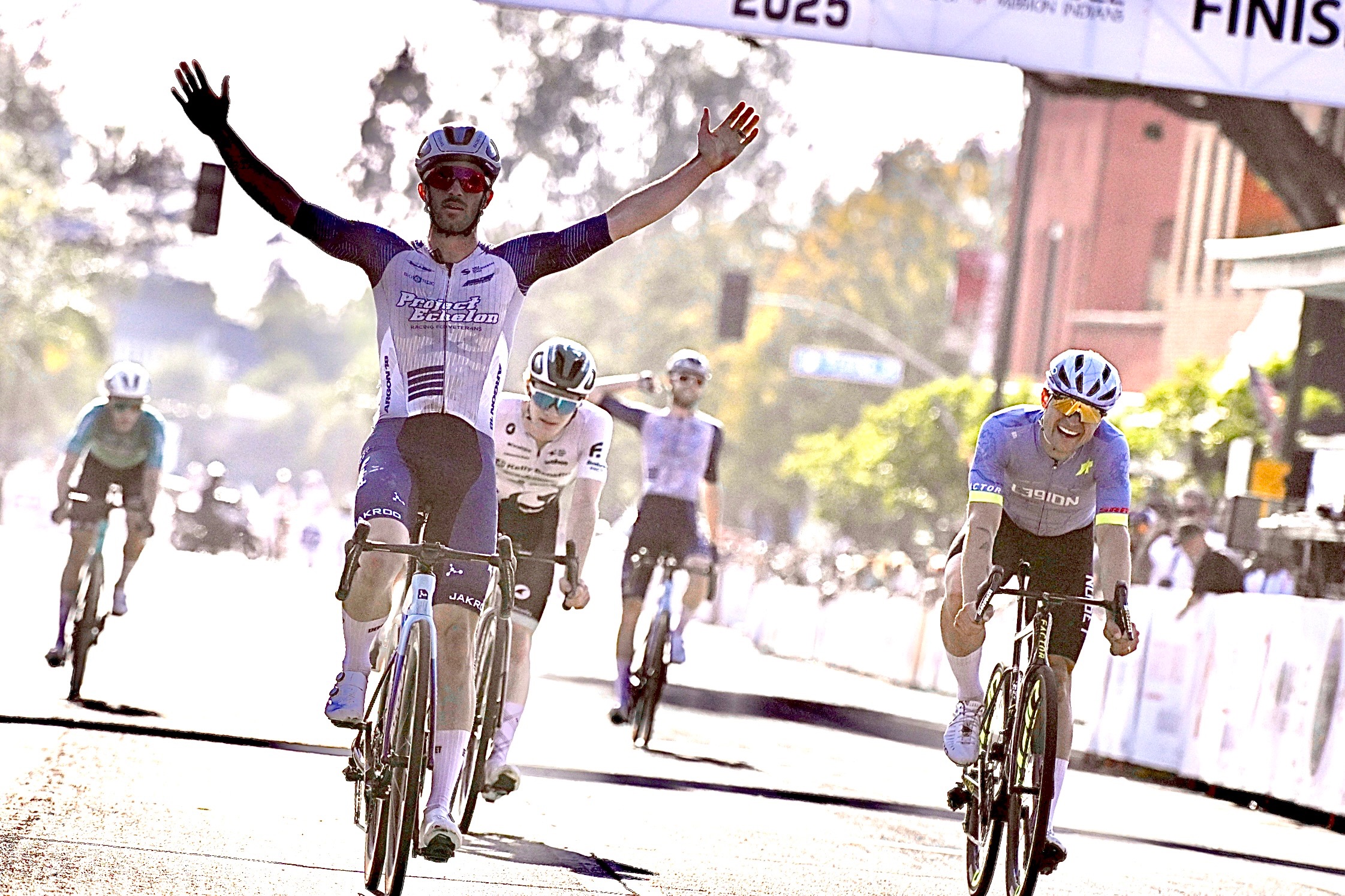
Photo: © Veloimages
Eder Frayre (Golden State Blazers), who holds the unique distinction of being the first Mexican rider to ever win the Redlands Bicycle Classic, finished safely in what was left of the peloton to successfully take first in the general classification by just 10 seconds ahead Quinn Felton (CycleSport.com). Team Winston Salem’s Owen Cole finished third overall, 1’04” back.
“I’m super happy and super proud,” Frayre said after the race. “I’m thankful for life, God, and my team for helping me and all my friends in the peloton. It took a long time to get here, and I’m very happy.”
The final stage covered a demanding 91.3 miles, beginning with two laps of a short criterium course in downtown Redlands.
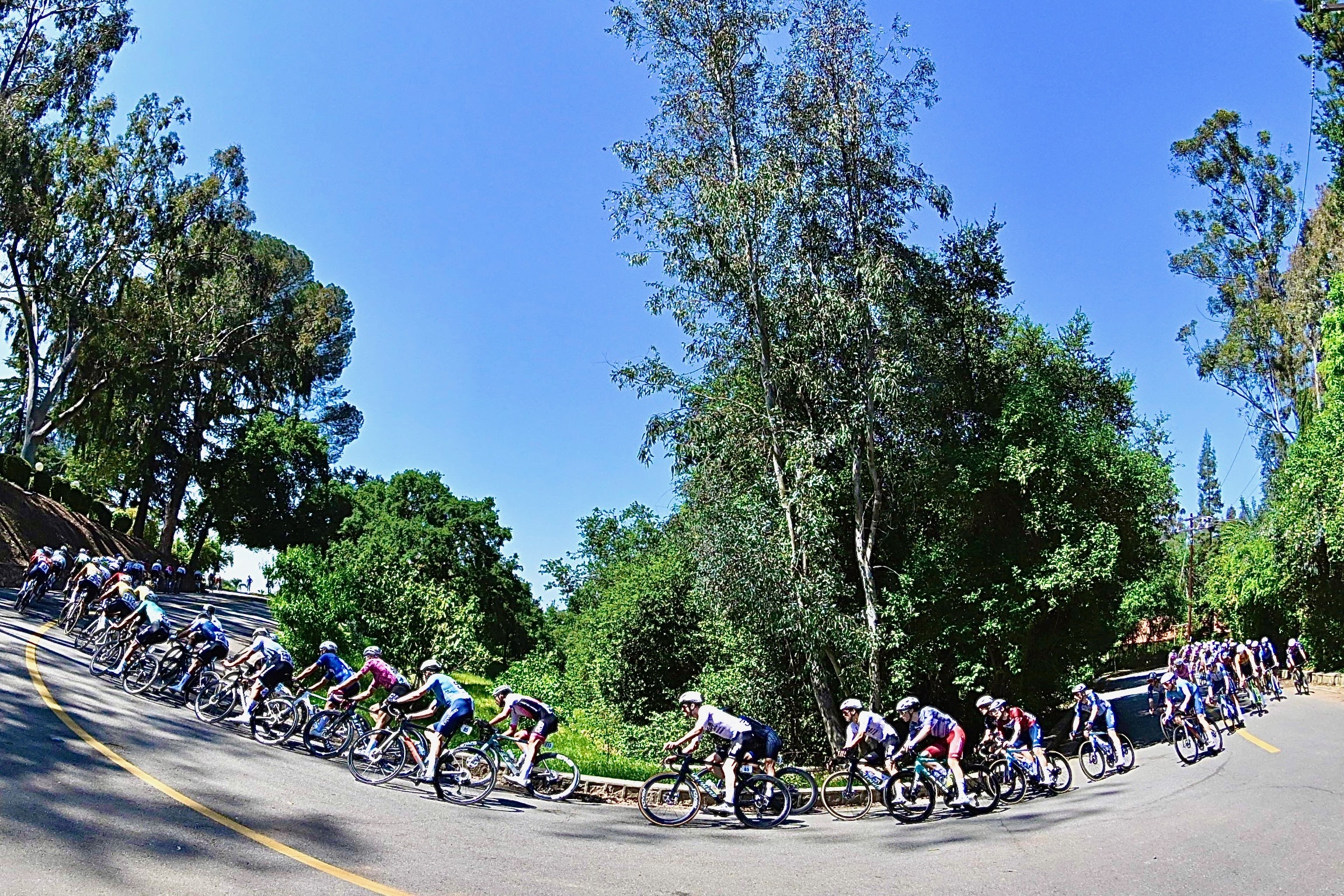
Photo: © VeloImages
Riders then tackled the challenging Sunset Loop, completing 12 laps of a 6.5-mile circuit featuring significant elevation changes, particularly in the first 2.6 miles. The stage concluded with five laps on a 1.0-mile criterium loop in downtown Redlands.
After some short-lived attempts at a breakaway, a group of eight escaped the Golden State Blazers stranglehold on the peloton, pulling away during the climb with 10 laps to go.
Heiner Parra (Canel’s-Java), Sam Boardman (Project Echelon Racing), Ryan Gorman (CycleSport.com), Evan Russell (Expeditors), Brody McDonald (Golden State Blazers), Joseph Laverick (Good Guys Racing NYC), Julien Ruhe (Kelly Benefits Strategies) and Peter Bock (Jacomo Racing Domestic Elite) gained a maximum advantage of a minute and some change for several laps before the Golden State Blazers reeled them in with five to go.
McGill and Ethan Craine (Project Echelon Racing), Nathan Cusack (Kelly Benefits Cycling), and Robin Carpenter (L39ION of Los Angeles) made up the next breakaway to pull away. After David Ruvalcaba (EMPYR Cycling) bridged across, the group had enough firepower to stay out of the peloton’s reach to the finish, and McGill had enough left in the tank to take top honors.
“We were just trying to salvage something from this race. We were second the first three stages, and then I crashed yesterday in the crit with three to go, so I was unable to contest the sprint,” McGill said. “We were either going to go for the win on GC or the win on the stage.”
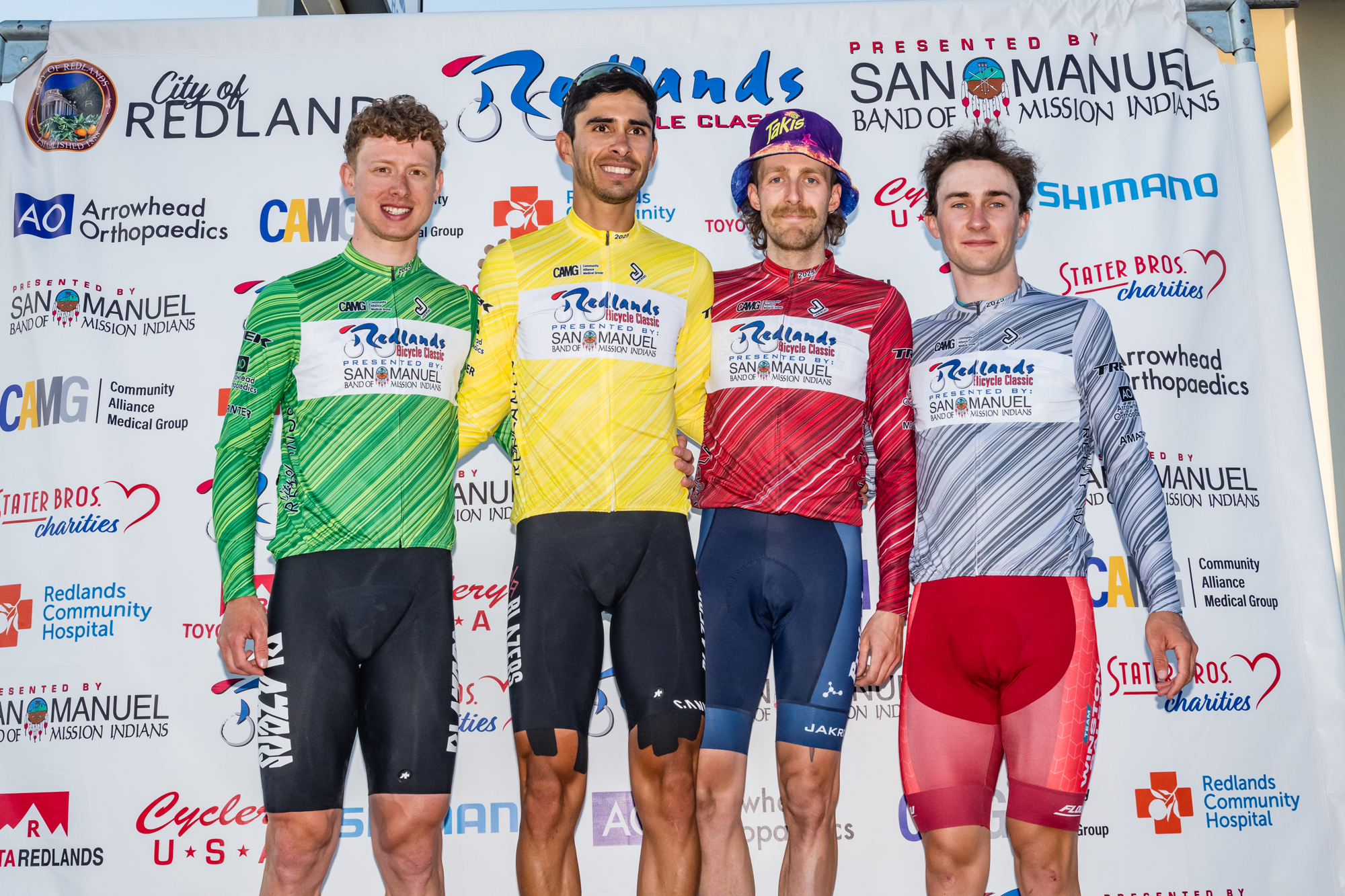
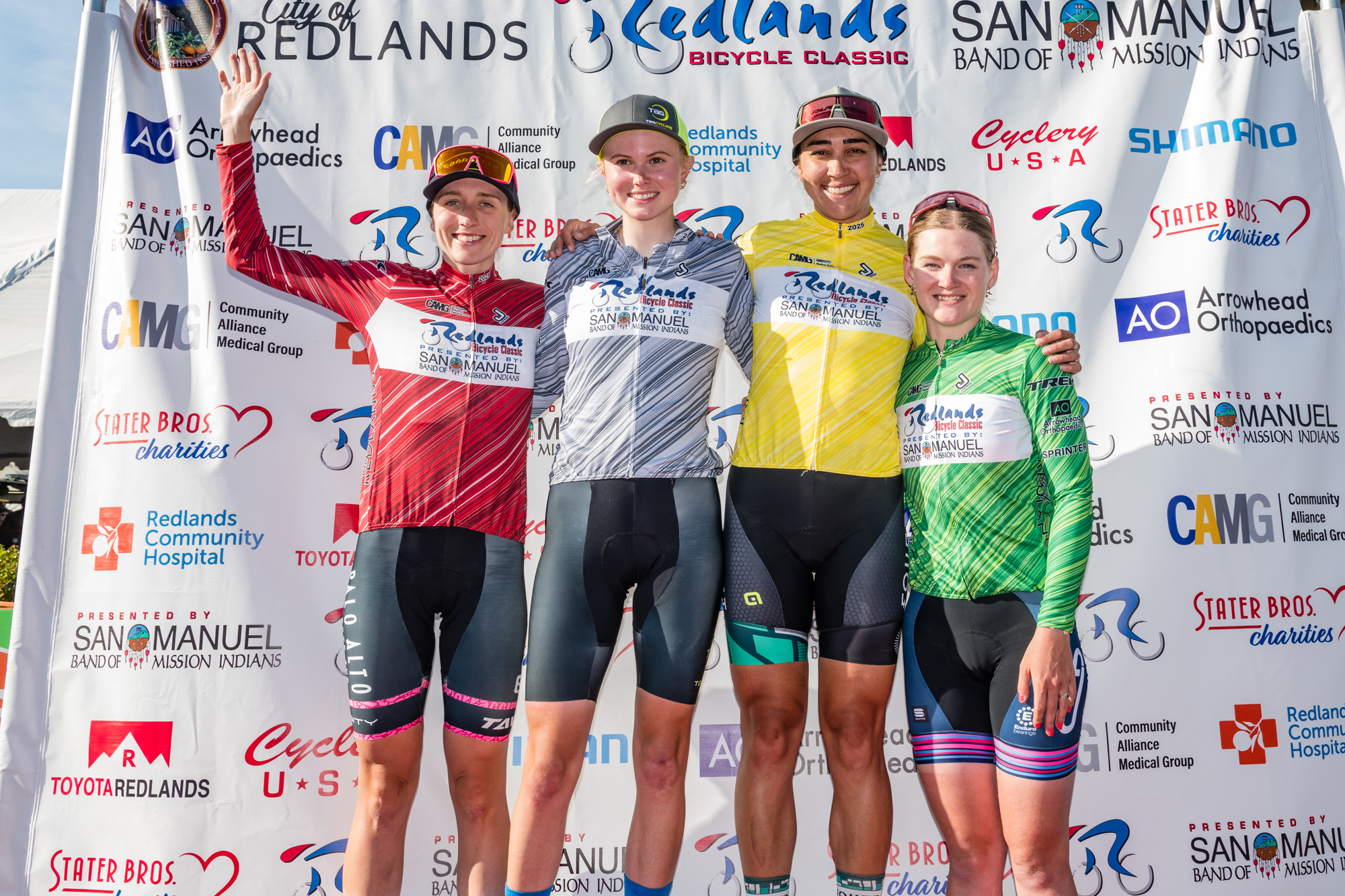
| PLACE | LAST NAME | FIRST NAME | BIB # | TEAM NAME | TIME | COUNTRY |
| 1 | FRAYRE MOCTEZUMA | Eder | 95 | Golden State Blazers | 11:03:24 | MEX |
| 2 | FELTON | Quinn | 61 | CycleSport.com | 11:03:34 | USA |
| 3 | *COLE | Owen | 238 | Team Winston Salem | 11:04:28 | USA |
| 4 | HAUG | Kieran | 27 | PROJECT ECHELON RACING | 11:04:55 | USA |
| 5 | *ELPHINGSTONE | Luke | 134 | Kelly Benefits Cycling | 11:05:12 | USA |
| 6 | ARNOPOL | Richard | 26 | PROJECT ECHELON RACING | 11:05:21 | USA |
| 7 | *SHELTON | Marcis | 211 | Team California p/b Verge | 11:05:43 | USA |
| 8 | LOCKWOOD | Cory | 92 | Golden State Blazers | 11:06:08 | USA |
| 9 | WRIGHT | Owen | 1 | Canel’s – Java | 11:06:45 | USA |
| 10 | RUVALCABA REYES | David | 76 | EMPYR Cycling | 11:06:49 | MEX |
| *Amateur/U23 Men | ||||||
| PLACE | LAST NAME | FIRST NAME | BIB # | TEAM NAME | TIME | COUNTRY |
| 1 | SHAFI | Alia | 301 | Fount Cycling Guild | 9:59:37 | USA |
| 2 | *SWIERENGA | Sidney | 391 | TaG Cycling Race Team | 10:02:06 | CAN |
| 3 | PAYER | Kira | 384 | SpeedBlock pb Terun | 10:02:13 | USA |
| 4 | FRYE | Ashley | 421 | Phase 1 Cycling pb Byrne Specialty Gases | 10:03:24 | USA |
| 5 | *GILBERT | Emmi | 436 | JAKROO Composite | 10:03:44 | USA |
| 6 | RUSCH | Katherine | 312 | CCB pb Levine Law Group | 10:04:42 | USA |
| 7 | WISEMAN | Eleanor | 306 | Fount Cycling Guild | 10:05:38 | BEL |
| 8 | SNOVER | Ellexi | 307 | Fount Cycling Guild | 10:06:57 | USA |
| 9 | GILBERT | Annie | 351 | Monarch Racing | 10:06:59 | USA |
| 10 | ONEILL | Cara | 452 | Team S&M CX | 10:07:03 | USA |
| *U25 Women | ||||||
(Visited 13 times, 3 visits today)
Sports
Boise State Releases Revised Volleyball Schedule
BOISE, Idaho – The Boise State Athletic Department has released the updated version of the Mountain West Conference schedule with the addition of Grand Canyon. The new addition changed the format of the conference season, where each team will face seven teams twice, down from eight teams, and four teams once, up from two on […]

The new addition changed the format of the conference season, where each team will face seven teams twice, down from eight teams, and four teams once, up from two on previous schedules. The conference season remains an 18-contest slate for each team.
The four teams that the Broncos will face once are: Grand Canyon (Sept. 25), New Mexico (Sept. 27), Nevada (Nov. 20) and Air Force (Nov. 22).
The nonconference portion of the schedule remains unchanged and starts on Aug. 29-30 at the Utah Valley Invitation in Orem, Utah, where they will face Navy, Montana and UVU.
Boise State will open the league slate on Sept. 25 at Grand Canyon in Phoenix, Arizona, followed by a match at New Mexico on the 27th.
The Broncos will need to weather a tough opening stretch of matches once conference play begins, with five of their first six contests on the road.
Season Tickets on Sale NOW
Season tickets are now available for purchase. Fans can purchase in person at the Boise State Athletic Ticket Office or by calling 208-426-4737. All tickets can also be purchased online. Season tickets start at $50 per seat, and family plans are also available for $120 (must buy 4 seats). The Broncos have sold out of reserved season tickets every season since they were first offered, so don’t waste time buying yours today. Single-match tickets will be available starting August 7.
To donate toward Boise State volleyball, please visit Boise State Volleyball Enhancement Fund.
Sports
North Irvine prevents Newport Beach 18U ‘three-peat’ at USA Water Polo Junior Olympics
IRVINE — Luke Harris called it a really hard decision to leave his brothers on the Newport Harbor High boys’ water polo team, competing for a different club team before heading off to college. What made the decision a bit easier was knowing that his good friend and fellow goalkeeper, incoming senior Connor Clougherty, was more than […]
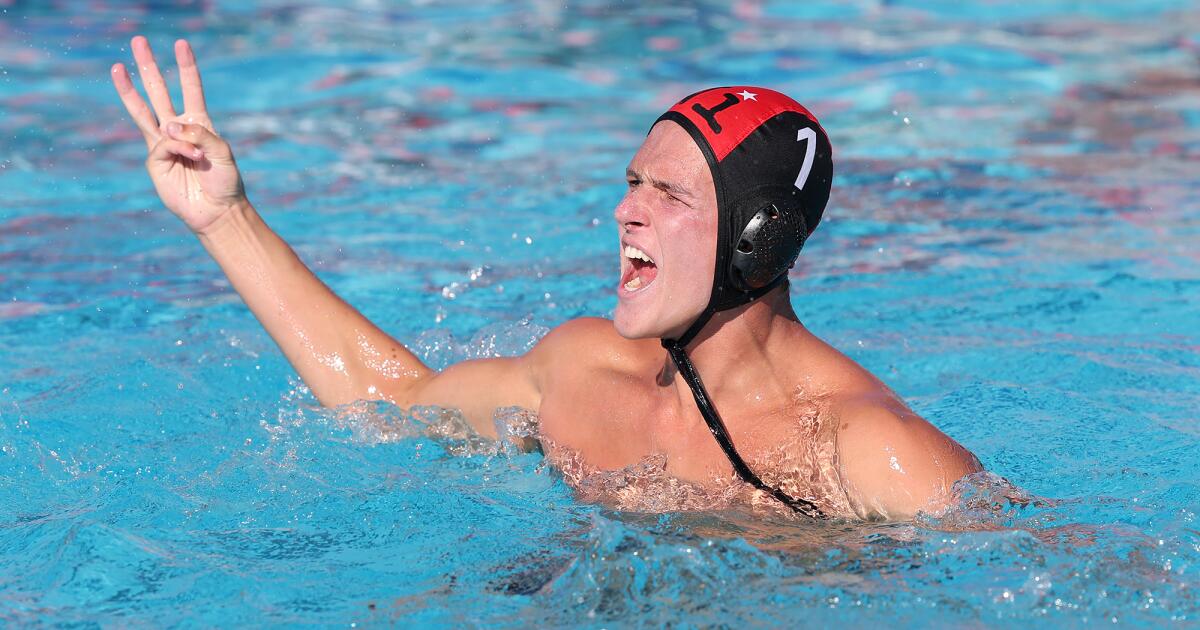
IRVINE — Luke Harris called it a really hard decision to leave his brothers on the Newport Harbor High boys’ water polo team, competing for a different club team before heading off to college.
What made the decision a bit easier was knowing that his good friend and fellow goalkeeper, incoming senior Connor Clougherty, was more than capable of taking the reins in the cage.
“That’s my true team, my alma mater,” said Harris, who helped the Sailors claim the CIF Southern Section Open Division title last fall. “I will always love them to death and be supportive of them. All I want for them is for them to get better and succeed.”
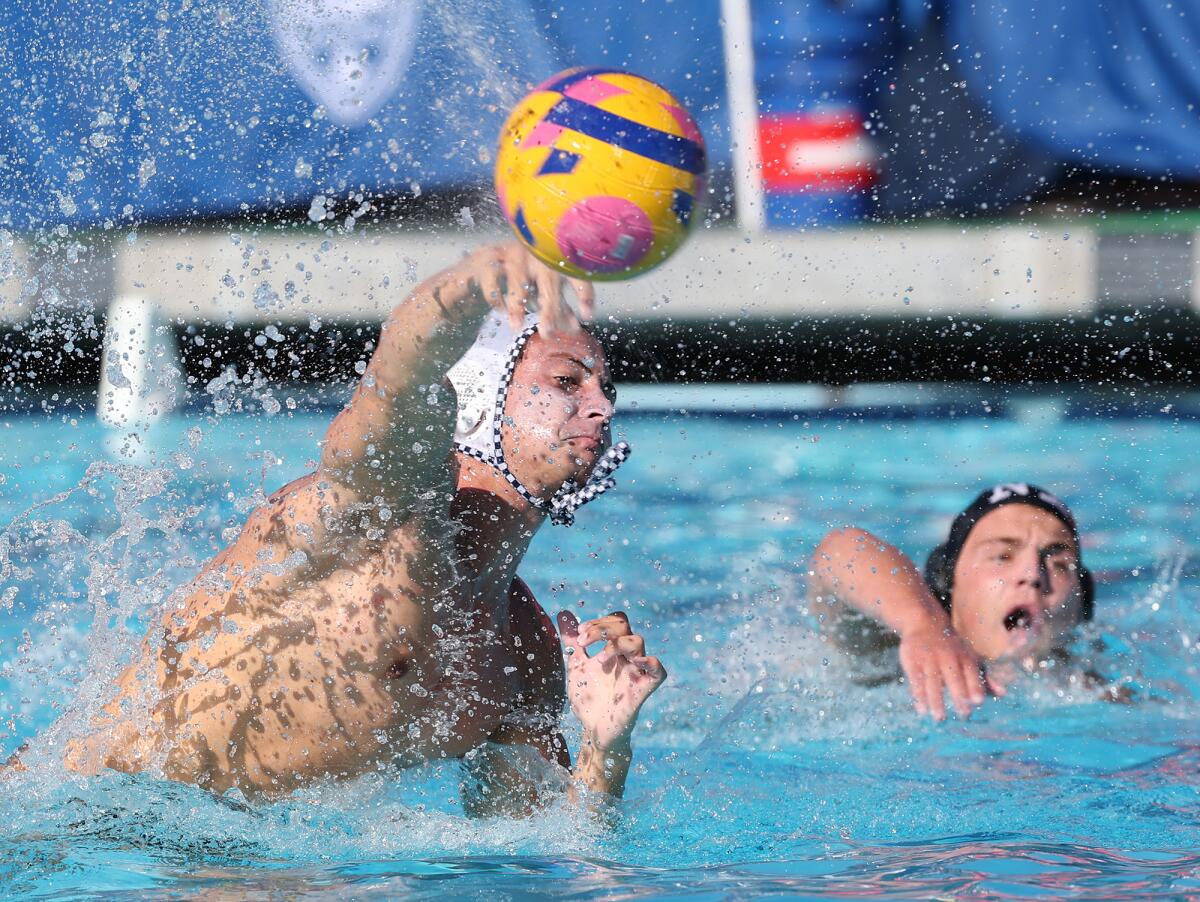
Kai Kaneko (18) of Newport Beach Water Polo Club shoots in a goal against North Irvine during Tuesday’s match.
(Don Leach / Staff Photographer)
Harris left to play with a “super team,” North Irvine Beast Boys, made up of players from different high schools, this summer. On Tuesday afternoon, he faced many of his Sailors teammates in the boys’ 18-and-under gold medal match of the USA Water Polo Junior Olympics.
Harris prevented Newport Beach Water Polo Club from winning the division three years in a row, though his own personal streak is intact.
The USC-bound goalie made 12 saves as the Beast Boys beat Newport Beach 9-5 for the title at Woollett Aquatics Center. It’s the third straight Junior Olympics title for Harris, who helped the Newport Beach 18s win it in 2023 and again last year.
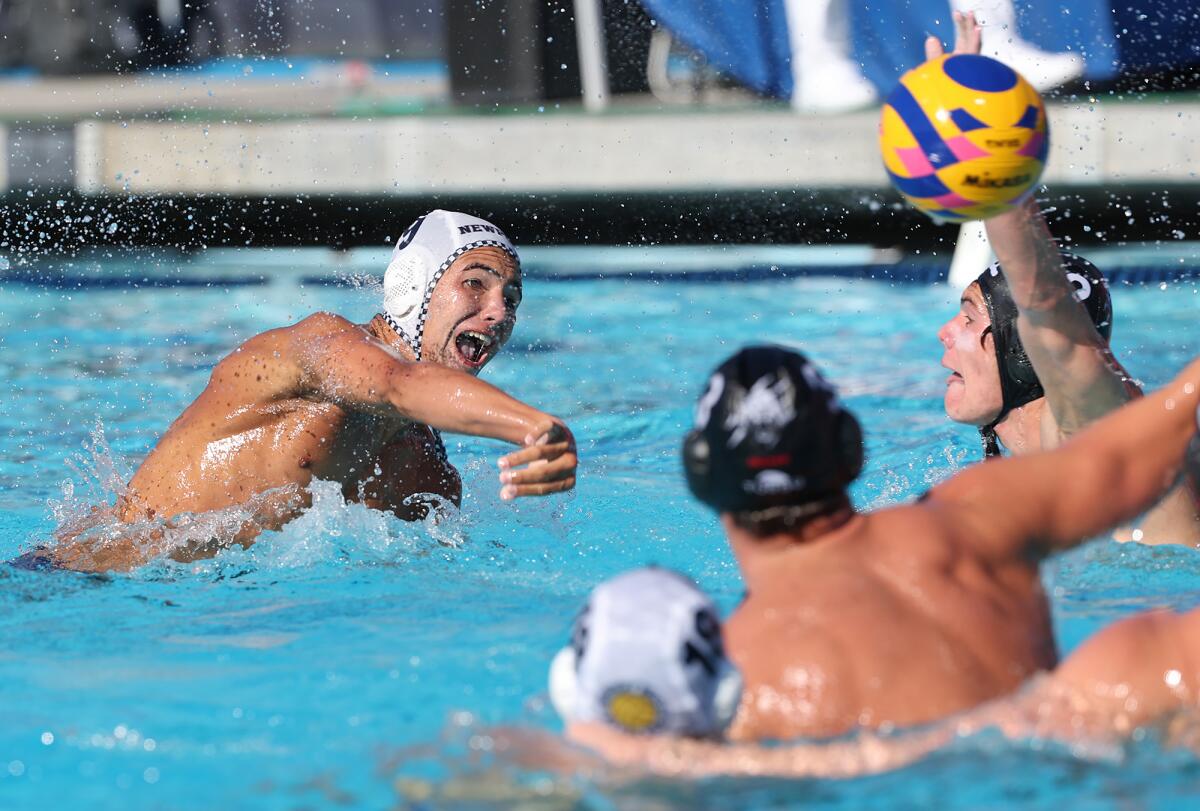
Marco Rizoff (9) of Newport Beach Water Polo Club shoots through traffic during the 18-and-under gold medal match of the USA Water Polo Junior Olympics on Tuesday.
(Don Leach / Staff Photographer)
“It felt like it was all or nothing,” Harris said. “If we didn’t win, we were going to feel like a bunch of dogs, honestly. Our whole persona was big, almost a little cocky, everyone kind of hated us. If we didn’t win this, it was all for nothing. That was our mindset the whole time.”
JSerra graduate Gavin Conant, who, like Harris, will be a Trojan next year, scored a match-high four goals and earned MVP honors.
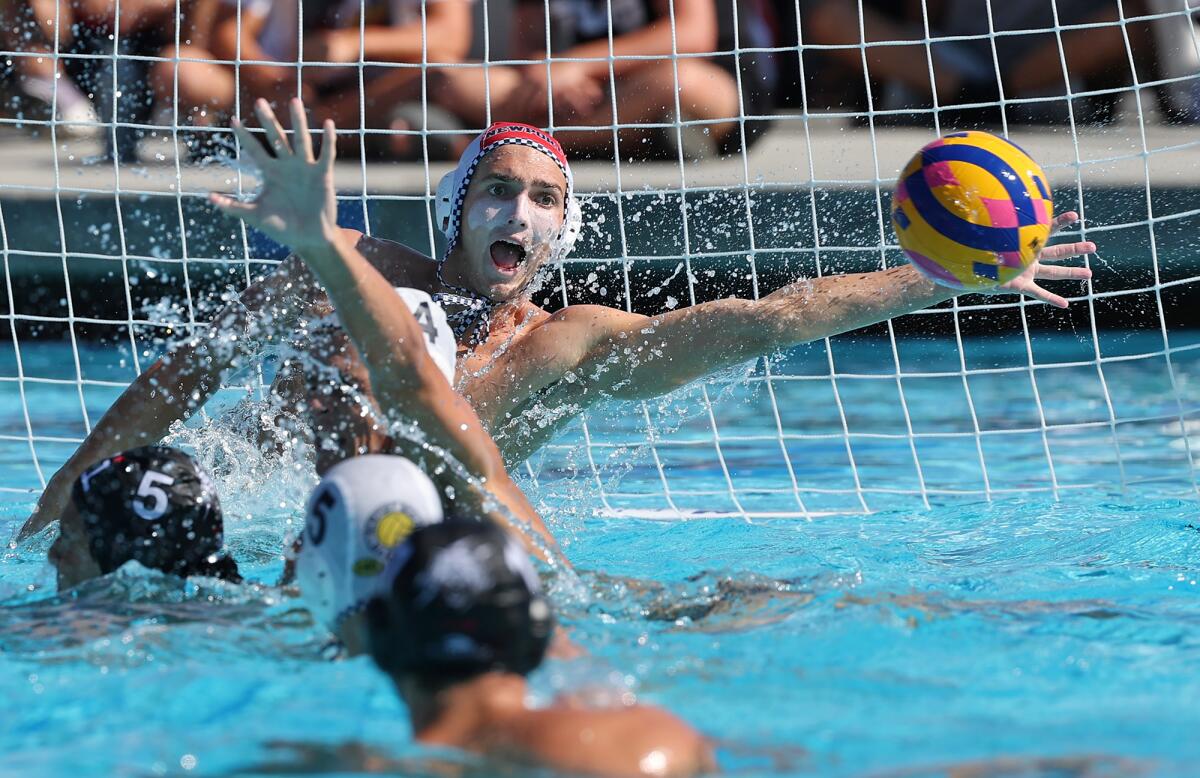
Goalie Conner Clougherty (1) of Newport Beach Water Polo Club makes a one handed save early in Tuesday’s game.
(Don Leach / Staff Photographer)
North Irvine, which avenged a loss to Newport Beach in the Junior Olympics quarterfinals on Monday, also featured Corona del Mar graduate Jackson Harlan and Newport Harbor graduate Santino Rossi. Harlan, the 2024-25 Daily Pilot Dream Team Player of the Year, had a field block and a drawn exclusion in the win.
“Coming together and training for three months, going out and getting the job done, there’s no better feeling,” Harlan said. “A surreal feeling.”
Sean Anderson, an incoming sophomore transfer from JSerra, had two goals for team-high honors for Newport Beach.
Coach Ross Sinclair said that Anderson and his older brother, Tyler, an incoming senior center who starred for the Lions last season, are now both officially enrolled at Newport Harbor.
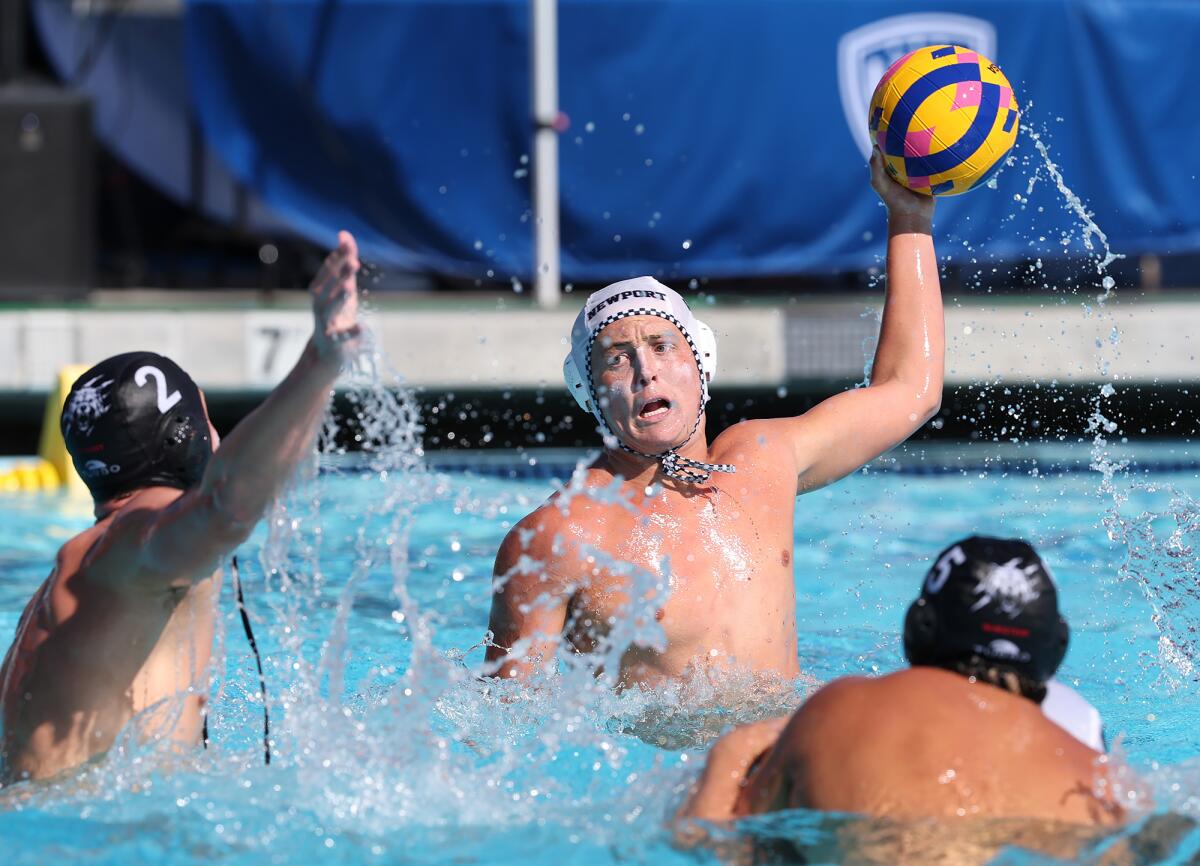
Mason Netzer (10) of Newport Beach Water Polo Club looks to shoot early in the game against North Irvine on Tuesday.
(Don Leach / Staff Photographer)
Kai Kaneko, Declan Bartlett and Fletcher Appeldorn added goals for Newport Beach. Clougherty made four saves.
Harris said that North Irvine, which led 6-2 at halftime, effectively utilized an “M-drop” zone defense.
“They just played a little faster, a little more intense, and they had some big moments from big-time players,” Sinclair said. “I love Luke; I thought he was great. I’ve seen that before. I’m bummed that we lost, but I’m happy for the way that he goes out his last year. He was fantastic.”
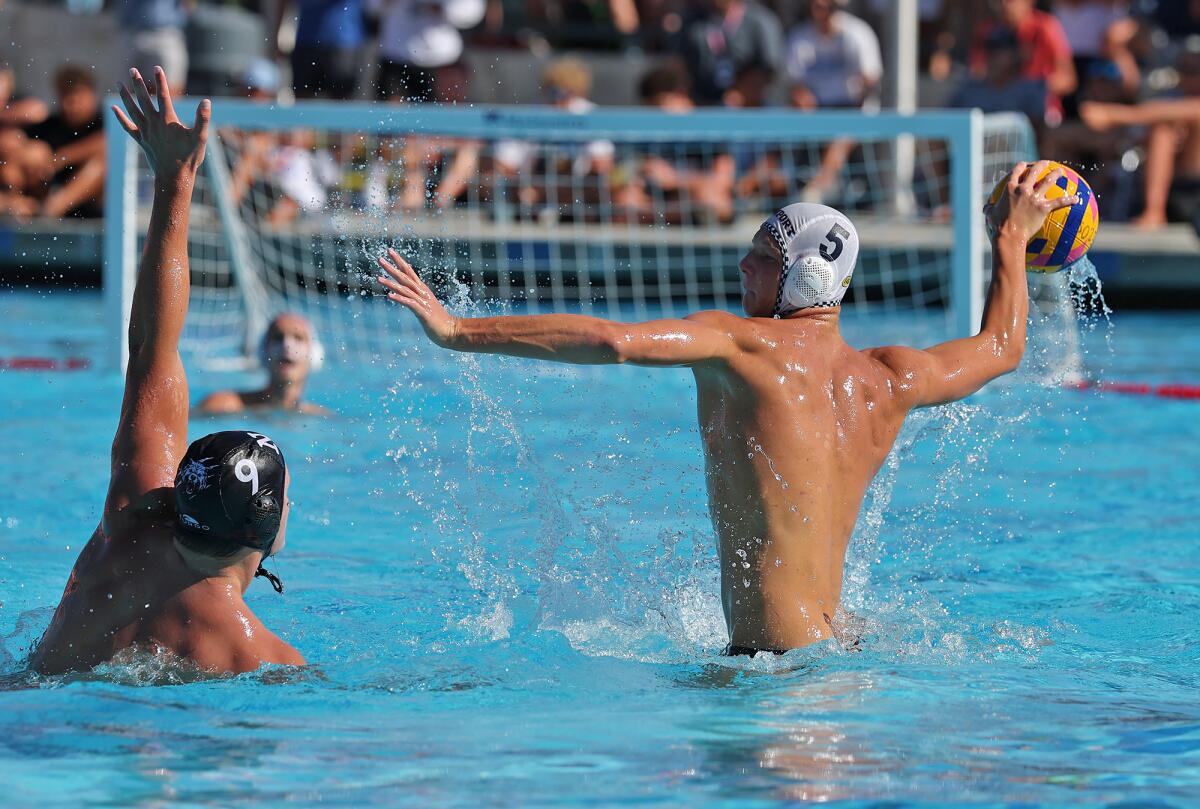
Sean Anderson (5) of Newport Beach Water Polo Club takes a long shot with time winding down against North Irvine on Tuesday.
(Don Leach / Staff Photographer)
Newport Beach missed incoming senior standout Connor Ohl, who has been playing with the U.S. men’s senior national team at the World Aquatics World Championships in Singapore. Team USA plays Italy in the seventh-place match on Thursday morning.
The Sailors, who Sinclair has guided to the CIF finals in the top division for six straight years, will get back to high school water polo soon enough this fall.
“We have a good group, it’s going to be fun,” Sinclair said. “It’s more, ‘how do we stay focused, stay hungry and use experiences like this to get better?’ It’s going to be a fun high school season. There’s a lot of good teams out there. We’ll enjoy a little break, come back and chip away.”
Session Two of the USA Water Polo Junior Olympics, featuring girls’ and co-ed divisions, runs Thursday through Sunday in Orange County.
Sports
Why Speed is Reshaping Sports Media Economics
In sports media, speed to air is a primary business requirement. Audiences expect highlights, replays, and social clips within seconds of the action, and the organizations that deliver fastest capture the most engagement, revenue, and relevance. Whether it’s a game-winning goal or a viral moment behind the scenes, packaging and distributing content quickly is now […]


In sports media, speed to air is a primary business requirement. Audiences expect highlights, replays, and social clips within seconds of the action, and the organizations that deliver fastest capture the most engagement, revenue, and relevance. Whether it’s a game-winning goal or a viral moment behind the scenes, packaging and distributing content quickly is now fundamental to competing in the digital sports economy.
Today’s fans, especially younger viewers, aren’t waiting for highlight shows or replays. They demand near-instant access to clips, behind-the-scenes exclusives, and viral moments across social feeds, apps, and OTT platforms to complement multi-screen viewing habits.

The TikTok Effect: Sports Fans Want Moments, Not Marathons
Studies show that 53% of Gen Z sports fans prefer highlight clips over full live matches, with platforms like TikTok, Instagram, and YouTube serving as primary discovery channels for sports content (Deloitte Global Sports Industry Outlook, 2024).
Further research indicates that more than 80% of sports fans use another screen while consuming live sports broadcasts.
This consumption shift is rewriting the rulebook:
- Mobile-First Viewing: Fans want bite-sized, on-the-go content.
- Platform Proliferation: Social apps rival traditional broadcasters as preferred viewing destinations
- Instant Gratification: The buzz of a game-winning goal fades fast; content delayed even 90 seconds risks becoming irrelevant
From this viewpoint, speed is a key driver of audience growth and revenue.

Why Legacy Workflows Fall Short
Traditional post-production chains, where assets crawl from ingest to editing to distribution, can’t keep pace with “as-live” expectations. Manual handoffs create bottlenecks, delaying turnaround from minutes into hours.
Leading sports broadcasters are moving beyond these silos with:
- Cloud-Native Workflows: Simultaneous, automatic, and near-real-time file delivery to multiple destinations, edit suites, OTT platforms, social feeds, and archives.
- AI-Driven Automation: Real-time tagging, clip generation, and graphic overlays triggered by metadata.
- Edge Computing: Venue-based encoding combined with private, accelerated cloud networks and channel bonding accelerates footage capture and transfer, slashing latency.
The result is faster highlights that fuel stronger engagement, higher ad yield, and increased rights value.
Case in Point: NRK Accelerates Live Broadcast Content Delivery
The Norwegian Broadcasting Corp. (NRK), a major European broadcaster, exemplifies how modern workflows are unlocking both speed and scale. NRK operates three national television channels, 14 national radio stations, and a news website, and often covers live sporting or other events.
But a few years ago NRK faced a common technical bottleneck: slow, unreliable file transfer during live broadcasts featuring dozens of cameras, along with manual downloads and uploads that delayed content readiness.
To solve this, NRK overhauled its near-real-time live content workflow using an automated, cloud-based file transfer pipeline integrated with the organization’s internal media asset manager and OB trucks. The workflow allows video content to be automatically transferred either to or from OB trucks the field to other NRK teams, while also sending it to their internal MAM and storage without manual transfers.
The impact is clear: by streamlining delivery, NRK post-production teams receive content from live broadcasts faster, without manual email links or saturated Wi-Fi networks slowing the process.
-ORG.jpg)
The Monetization Math of Faster Highlights
The economics of sports media are evolving alongside technical capabilities:
- Premium Rights Deals: Leagues include strict SLAs for turnaround speed, with financial penalties for missed windows and bonuses for sub-minute delivery
- Higher CPMs: Social and video platforms reward fast, high-engagement content with algorithmic boosts and improved revenue share.
- Fan Retention: Viewers who receive highlights immediately post-event are more likely to subscribe, engage deeper, and purchase premium offerings; real-time stats and interactive features can considerably boost fan engagement and monetization
The message is clear: faster content pipelines translate directly to stronger engagement, better monetization, and higher platform visibility.
The New Playbook for Real-Time Storytelling
Winning this new race requires both technology and organizational agility:
- Distributed Capture: Portable encoders push footage to cloud storage from the field.
- Automated Pipelines: AI and metadata trigger hands-free ingest, tagging, and publishing workflows.
- Edge-Optimized Delivery: CDNs with compute nodes near venues, and cloud-native transfer services that can bond multiple internet connections for improved performance and resilience, reduce upload latency even in venues with low connectivity.
- Cross-Functional Teams: Real-time upload portals allow integrated groups of producers, editors, and social managers to leverage fan-generated clips and other fast-moving content to generate even more engagement
Organizations that merge silos, embrace automation, and prioritize low-latency infrastructure will outperform those clinging to legacy processes.
Conclusion: Speed is the New Currency
In sports media, speed defines competitive advantage. The ability to move from capture to global audience within seconds isn’t aspirational; it’s becoming the standard.
Organizations that modernize their workflows and foster real-time collaboration will own the moments fans crave, before the next swipe or scroll steals attention away.
[Editor’s note: This is a contributed article from MASV. Streaming Media accepts vendor bylines based solely on their value to our readers.]

Related Articles

Accelerating FAST Revenue With Live News and Sports
The FAST space is experiencing explosive growth. Platforms no longer want channels that simply fill space. They demand content that drives engagement, ad revenue, and repeat viewership. The bar is much higher: content must be immediate, authentic, and often exclusive. That’s why the next phase of FAST will be defined by real-time, high-value live news and sports content as platforms compete to capture and keep audiences.
10 Jun 2025

Beyond Broadcast: How Streaming is Reinventing the Live Sports Experience
Success today isn’t defined by simple reliability. It’s about delivering live sports at broadcast-level speed, enhancing it with personalized viewing options, and orchestrating a broader digital ecosystem that keeps fans connected before, during, and after the game. Streaming isn’t a replacement for TV – it’s a complete redefinition of what sports media can be.
15 May 2025
Sports
Where the bar keeps rising: How Derek Miles turned Olympic lessons into a national pole vault power at USD – Sioux Falls Live
VERMILLION — Derek Miles hasn’t spent much time sifting through the parallels between his pole vaulting career and the program he’s spent the last 20-plus years building at the University of South Dakota, but they are impossible to overlook. Miles was by no means the flashiest, most talented vaulter during his decade-long foray as an […]
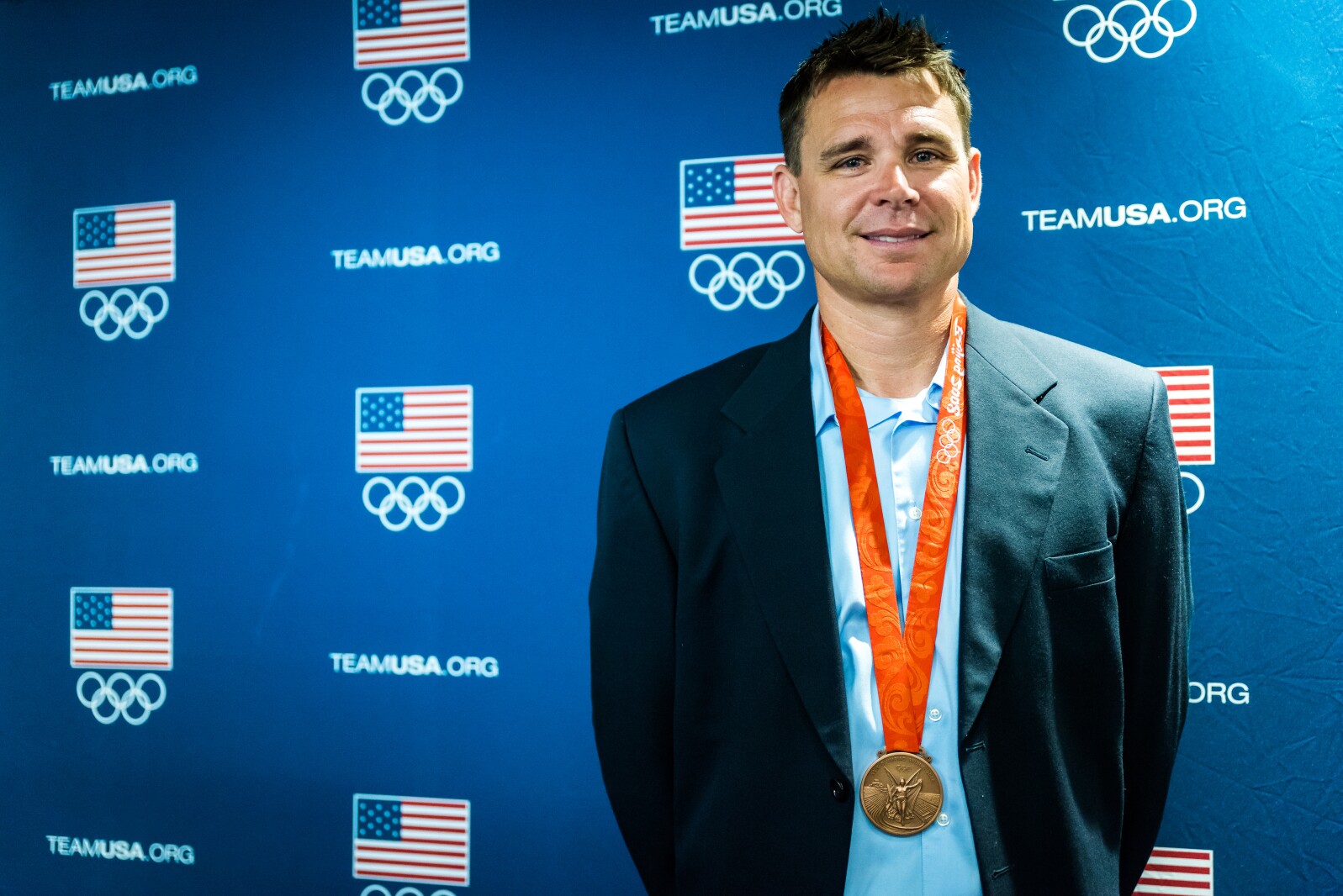
VERMILLION — Derek Miles hasn’t spent much time sifting through the parallels between his pole vaulting career and the program he’s spent the last 20-plus years building at the University of South Dakota, but they are impossible to overlook.
Miles was by no means the flashiest, most talented vaulter during his decade-long foray as an international competitor. Instead, he paved his way through hard work, establishing a level of consistency that continues to accompany him as a teacher of his craft.
On the heels of his 23rd season as a coach, Miles now holds the title of associate director of track and field/jumps at his alma mater, and during that time, USD has emerged as one of the premier vault programs in the country.
Since transitioning to Division I in 2011, the Coyotes have sent more than 60 pole vaulters to the NCAA preliminary round. Meanwhile, four national titles and 40 All-America honors have been achieved during that span.
It’s a model of consistency that mirrors its leader in Miles, whose 10 years as an international vaulter resulted in three trips to the Olympic Games and six world championship teams.
For Miles, consistency is rooted in his own foundation as a vaulter. As a competitor, he trained under the legendary Earl Bell, a three-time Olympian and bronze medalist at the 1984 Olympic Games, in Jonesboro, Arkansas, while working alongside some of the best pole vaulters in the country.
All these years later, that same knowledge and approach has enabled Miles to build a powerhouse vault program in Vermillion.
“I think the same foundation probably exists in our program, where we start with fundamentals in the first year of understanding how to run down the runway correctly and the importance of having consistency while you’re running down the runway and hitting the same marks so that you know what’s going to happen at the take-off,” Miles said. “And then it’s about having the foundational knowledge that Earl gave me in terms of the right pole, right grip, right standards, all these things that keep vaulters safe when they jump but also give them lots of reps down the runway. It allows them to learn a lot throughout the process.
“The more they learn, the more consistently they’re able to stay healthy, and the chances are they’re going to be able to achieve repeatable things.”
A native of Citrus Heights, California, Miles was a five-time All-American pole vaulter at the Division II level for USD. He claimed a bronze medal for his performance in the pole vault at the 2008 Beijing Olympics, and 13 years later, he was the guiding hand behind former USD star Chris Nilsen’s silver-medal vault at the 2020 Tokyo Olympics.
Miles was inducted into the Henry Heider Memorial Coyote Sports Hall of Fame in the fall of 2006, and in 2013, he was inducted into the U.S. Track & Field and Cross Country Coaches Association DII Hall of Fame.
“I think he’s one of the best pole vault coaches in the world,” said Lucky Huber, who has been at the helm of the Yotes’ track and cross country programs for the past 17 years. “I just think he does an amazing job, and part of that, as you look at great athletes, not every great athlete can go on to become a great coach. But Derek wasn’t necessarily a great athlete. He was someone who had to work really hard and be very consistent and pay the price.
“By going through that process of really developing, he’s been able to transition that into his great coaching.”
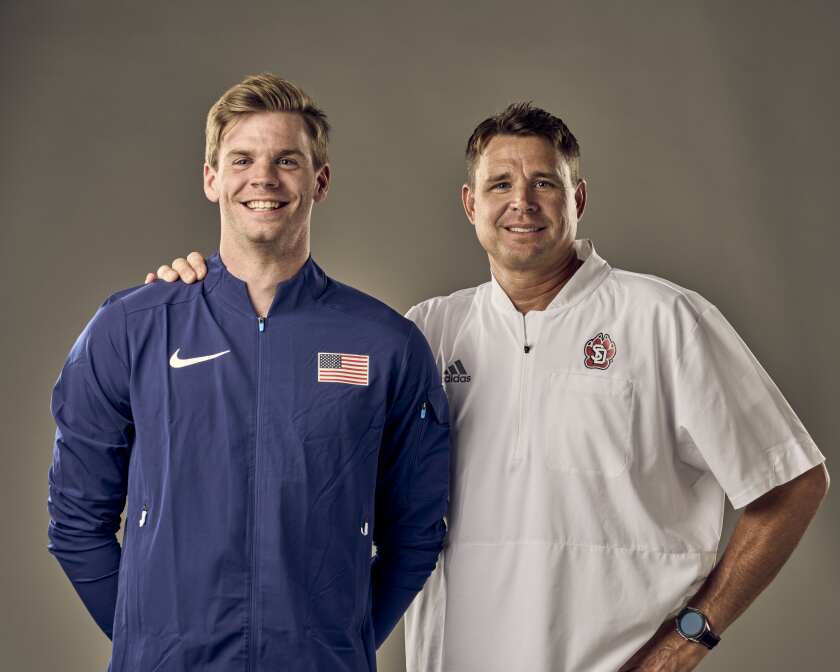
USD Athletics
Beyond his knowledge as a coach, Miles is revered by his students for his benevolence as a human being. Many of them view him as a father figure who refuses to allow the sting of failure to affect their confidence on the runway.
“I think that falls into place for a lot of things in life. If something doesn’t go quite right, he doesn’t get rattled,” said Emily Grove, a former six-time All-American vaulter at USD who has gone on to compete internationally. “He just thinks of a way to go around it and knows everything is going to be OK if you just keep working hard.”
Today, Miles lives in Tea, where his wife, Tori, has been the head coach of the Titans’ girls track and field team for the last 17 years. Their son, Ariston, is now 11 years old, and while the dynamic of their family has certainly changed, so has Miles’ approach to the sport he loves.
The 52-year-old coach no longer feels as if he has something to prove, removing the weight of personal expectations in order to allow his wealth of knowledge to flourish.
“He had guidance as he was progressing through his career,” said Jesse Haines, a former multi-eventer at USD who now serves as manager of Sanford Sports Performance. “He went down to Arkansas for a while, which was a world-class facility that really elevated his vault technique.
“He has Olympic medals in his pocket. It’s just things he’s been through. He’s seen it, and he does a great job of passing on that knowledge to the next generation.”
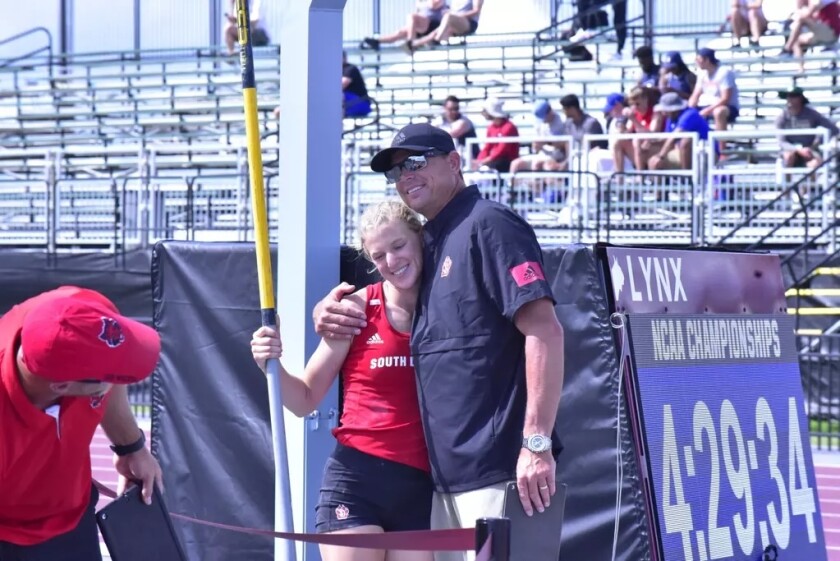
USD Athletics
Foundation of a powerhouse
USD pole vaulting’s rise mirrors the steady career of its humble architect
Despite growing up in California, Miles’ journey to South Dakota was perhaps inevitable.
His parents, John and Vicki, were originally from South Dakota. John grew up in Watertown before attending the South Dakota School of Mines, while Vicki was raised in Lennox before eventually enrolling at USD.
After college, John and Vicki settled in California, where John worked at California State University, Sacramento, overseeing a number of computer programs in the state-based higher education system.
While attending Bella Vista High School in the suburbs of Sacramento, Derek competed in the pole vault but was never able to qualify for the state meet, so his options after high school were essentially non-existent.
His father had always kept close ties to his home state and had long admired the blue-collar lifestyle, persuading Derek to pursue opportunities outside of California and going so far as to make a phone call to Dave Gottsleben, who oversaw the USD men’s track and field team at the time, to see if he’d be willing to recruit his son or allow him to be a part of the team in some capacity.
“Coach Gottsleben was the only one who really talked to me or called me. He was really my only option if I really wanted to pole vault,” Miles said. “My dad really didn’t want me to go to Cal State, Sacramento. He wanted me to go out and have a different experience and have an athletic experience, so I think that’s kind of how it originated to go to school there.”
At the time, Huber, a former pole vaulter himself, was working as a graduate assistant under Gottsleben and was looking for students to mentor.
Miles’ arrival signaled the start of something special. Thirty-four years later, the two coaches have become best friends.
“The two of us have kind of challenged each other throughout our whole career together in order to get better and push and look toward the next great thing we can do,” Huber said. “I don’t think he or I have ever let the University of South Dakota or Vermillion seem like it’s a spot where we can’t be successful, and I think that’s part of what makes our program so special.
“It’s the people who do it, and he’s a big part of that.”
Along with vaulting, Miles also competed in the long jump, triple jump and decathlon during his time at USD. By the time he graduated, he had added about six inches and 45 pounds to his body, culminating in a 6-foot-3, 194-pound frame.
“There was definitely a lot of physical maturity and development that took place in college,” Miles said, “but having Lucky invest the time and the effort into working with me and helping me to try and get a little bit better every year was key.”
I don’t think he or I have ever let the University of South Dakota or Vermillion seem like it’s a spot where we can’t be successful, and I think that’s part of what makes our program so special.
USD track coach Lucky Huber
The development process was arduous for Miles. As a freshman, he was unable to jump his high school PR, but after a big sophomore leap, Miles continued to make strides in the pole vault.
As a senior, Miles was consistently clearing 17 feet in the vault when he began mulling what was next. He knew graduate school was on the horizon but wasn’t sure whether or not his undergraduate degree in history was going to lead him down the teaching path. Then, at the last minute, he opted for an athletic-minded graduate degree, pursuing a master’s in athletic administration that opened the door for him to become a graduate assistant for the track team.
By 1997, Miles had jumped 18 feet, and somehow, he managed to sneak his way into the USA championships alongside Chad Harting, another collegiate vaulter who trained at an elite-level facility in Arkansas known as Bell Athletics.
“That’s where I was introduced for the first time to Earl Bell,” Miles said. “At the time, he was training Olympians and world record-holders and just had a whole stable of guys and gals who were jumping really well and making Olympic teams. It was just a really cool spot.
“Meeting this guy named Chad really opened the door of communication with Earl and being a part of that group.”
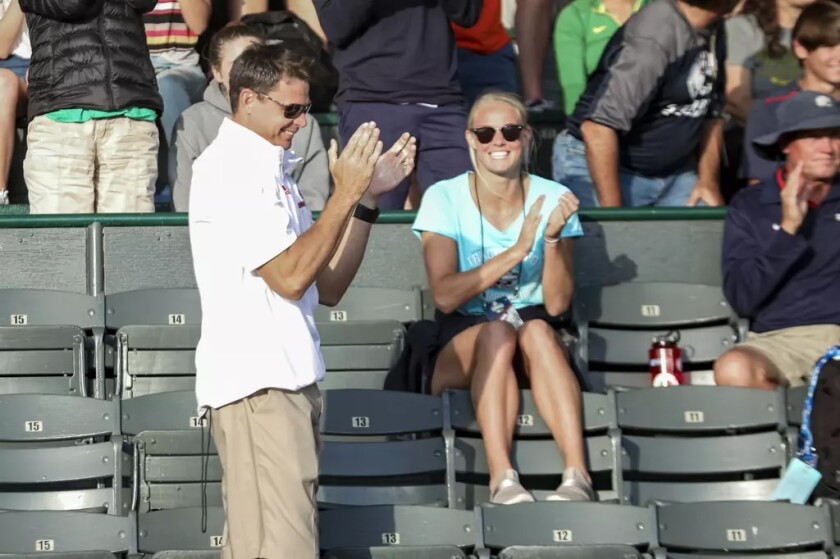
Nate Barrett Photography
A career-changing environment
Miles finds the blueprint for high-level training in Arkansas
After receiving his grad degree, Miles worked for several years as an academic advisor at USD, but during that time, he drove to Arkansas once a month to train at Bell Athletics for several days. Within the first year of doing that, he managed to qualify for the 2000 U.S. Olympic Trials.
Then, around 2001, Miles jumped 19 feet for the first time in his career, prompting him to make the decision to move to Jonesboro and train with Bell on a full-time basis.
Learning from Bell offered Miles a unique self-exploration project in which he sought out ways to improve in all aspects of his life.
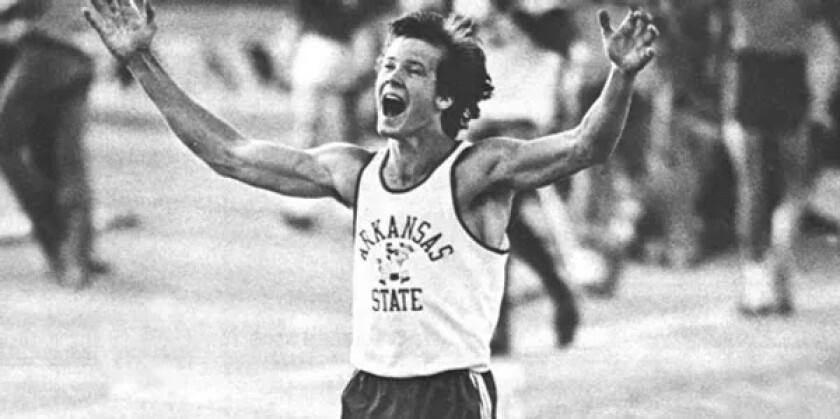
Bell Athletics
For Miles, it was a pole vaulting laboratory unlike anything he’d ever experienced. He was exposed to the daily regimen of Olympians like Jeff Hartwig, the American record-holder at the time who operated much like “a self-employed business.”
“He was so specific and committed and detailed,” Miles said about Hartwig. “Even everything down to how he traveled and why he used a roller bag instead of a backpack, they were these little things that, over time, I learned as I tried to figure out what I could apply to myself and what I couldn’t.”
For about five years, Miles worked in academic advising at Arkansas State while training under Bell. He admits it took some time to learn why the legendary coach would train him differently than other elite vaulters like Hartwig, Harting or Tye Harvey, all of whom excelled on the world stage, but the understanding of those differences — the strengths and weaknesses of each individual athlete — ended up becoming a foundational piece of his coaching endeavors.
“Over those 10 years of working with Earl and being on the circuit, I think it’s given me a lot of information on why things work for certain athletes and why they don’t with others,” Miles said. “Those experiences are what I think I’ve leaned into the most with my coaching.”
In 2004, Miles placed seventh in the pole vault at the Olympic Games in Athens, Greece, after clearing a height of 18 feet, 10 1/2 inches (5.75 meters). He placed third in the vault later that year at the World Athletics Final in Monte Carlo, Monaco, before taking fifth in the same event a year later, but in 2008, Miles’ career reached its high mark, beginning with a first-place jump of 19-0 1/4 (5.80 meters) at the U.S. Olympic Trials in Eugene, Oregon.
That set the stage for the 2008 Beijing Olympics, where Miles took fourth in the vault with a clearance of 18-8 1/4 (5.70 meters). He was later awarded the bronze medal in 2017 after the original third-place finisher, Denys Yurchenko of Ukraine, was disqualified due to a doping violation.
Miles then added to his stellar season in September 2008 in Germany, where he set a personal best in the vault (19-2 1/2) at an exhibition event in Berlin and earned a gold medal (19-0 1/4) at the World Athletics Final in Stuttgart.
“I jumped higher in Athens and got seventh. I jumped lower in Beijing and got fourth, but that’s the thing — you have to be consistent enough in all the meets you go to in order to give yourself chances,” Miles said. “That’s kind of the strength that maybe I learned at Earl’s.”

Nate Barrett Photography
Pushing too hard, learning even more
Gradually, coaching takes over as Miles transitions from athlete to mentor
After taking seventh at the 2004 Olympics, Miles began to notice that fellow Americans Tim Mack and Toby Stevenson — both of whom claimed gold and silver, respectively, in the pole vault — had achieved their success through an all-in approach to their training.
At the time, Miles was still working full-time at ASU while training on the side, so in 2006, he had quit his job as an advisor and “went nuts on training.”
“I just trained because I could, and I ended up with a stress fracture in my tibia that I just couldn’t shake,” Miles said. “I spent all of 2006 trying to jump and compete through a stress fracture that really just came about because of over-training, and at the end of ‘06, I struggled.
“I took a bunch of time off and then decided it just wasn’t healing.”
After consulting with a number of reputable doctors, Miles eventually went with a doctor in Alabama who installed a rod in his leg, allowing his stress fracture to properly heal. His road to recovery was long, but in August 2007, he was cleared to return to vaulting.
Miles, who was in his mid-30s at the time, knew his physical ability was going to be the key to prolonging his athletic career, so he opted to return to South Dakota, where he trained with Huber to get his body back up to speed.
“Lucky had always done my physical training, and Earl had always done the technical stuff,” Miles said. “I felt like I had a good understanding of the technical stuff, but I really needed to work on the physical stuff.”
While training with Huber, Miles helped out as an assistant coach for the Yotes, working with the long jumpers and triple jumpers. Sam Pribyl was coaching the pole vaulters at the time and was excelling in his role, but over the next few years, Miles’ role continued to expand.
Then, in 2012, Miles officially retired as a pole vaulter and went on to become a full-time assistant for the Coyotes.
“It was just this gradual thing where I was involved and then coaching a little bit more. Then, by 2009 or 2012, I started recruiting a little bit,” Miles said. “I recruited Bethany Buell during that time … and even Emily Grove. I was still part-time coaching, but I recruited them to be a part of the program, knowing that at some point I was going to probably retire and become a full-time coach.
“It just kind of gradually became pretty heavy vaulting and very little coaching, and then, over four or five years, it slowly teetered to the opposite side, where I was doing mostly coaching and winding down my career.”
When Miles returned to Vermillion, USD was beginning to transition to the Division I level, during which Gottsleben and Huber were diligently committed to finding something within their program that could put the university on the map.
“Coach Gottsleben and I convinced coach Miles it was time to go into his coaching career, and he then just kind of ran with it and built it. But it was very purposeful that we wanted to be this great,” Huber said. “We committed the resources to being great, and then he brought in the athletes.
“We’ve tried to do everything we can to support him and all of our athletes so that they can compete at such a high level.”
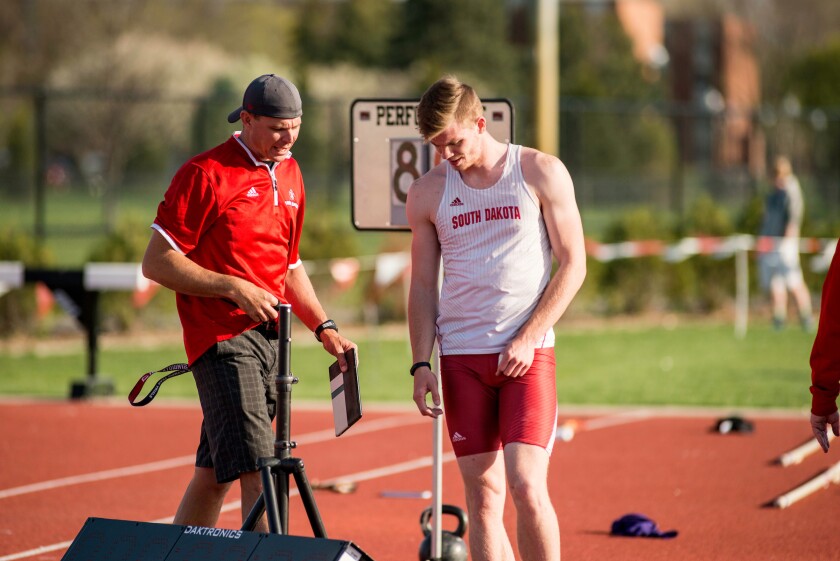
Aaron Packard / USD Athletics
Recruiting the right people
Miles values character, growth potential and fit above all else
While pole vaulting is widely considered the most high-risk event in track and field, it is also one of the more puzzling events to project whether or not athletes will be able to succeed in their transition from high school to college. In fact, Miles’ own journey to the Olympic stage is perhaps the perfect example of that unpredictability.
Recruiting has become an annual chore for the longtime vault coach, but over the years, Miles has undoubtedly instituted a winning method.
“I think what I look at, first and foremost, is the kid I’m recruiting,” Miles said. “Who are they as a person? Are they someone who’s going to come into the program and make the program better despite what they jump? I think that’s where I start.”
From there, talent comes into play. Among potential recruits with high character, Miles then identifies those who were successful enough in high school that they are able to regularly travel with the team and enjoy a true college experience.
“Somewhere in there, there are some performances in high school that matter a little bit,” Miles said, “but it’s secondary in relation to the type of person they are.”
The final recruiting element Miles focuses on is finding individuals who he believes can grow in the sport. These are vaulters who show promise and room to improve or are clearing high marks but haven’t quite grasped exactly how they’re doing it.
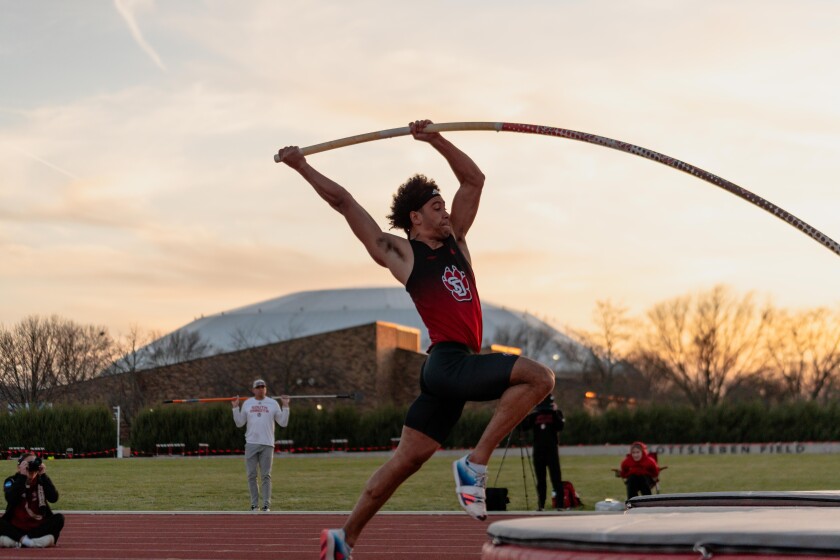
Adam Pearson / USD Athletics
A prime example of this type of recruit is Tre Young, who was recognized as the 2025 Summit League Field Athlete of the Year following a stellar senior season.
Miles recalls a home visit with Young’s family on the recruiting trail in which he observed a family structure that led him to believe he would fit in well with his program.
“Tre was a really interesting case, too, because he was one of about 22 or 23 in his family,” Miles said about Young, who was also recently named the 2025 Sioux Falls Live Men’s Track/Cross Country College Athlete of the Year. “I did a home visit with him, and I think 19 of the kids in the family were adopted. So here’s the really interesting dynamic of a family that’s helping people, and about six or seven of them were special needs kids.
“To me, that was intriguing. This was a family that was willing to take in these kids and provide a home, and Tre was a pretty athletic dude but just needed something of similar support. I thought he could be good. When it connects, it connects, and you kind of know.”
Grove recalls the first time she met Miles at the 2010 Gill Factory Vault in Champaign, Illinois. The native of Pontiac, Illinois, was a junior in high school at the time and had watched Miles compete in the elite competition. Not long after, Miles approached the young vaulter during her jump, instructing her to grasp the inch of grip near the top of the pole.
“I’m like, ‘Are you sure I can do that?’ He’s like, ‘Yeah, it’s fine,’” said Grove, who was a two-time state champion and former state record-holder in the pole vault at Pontiac Township High School. “Then I made the bar, and it was super mind-blowing to me.
“He got my contact information for recruiting stuff, and it kind of took off from there.”
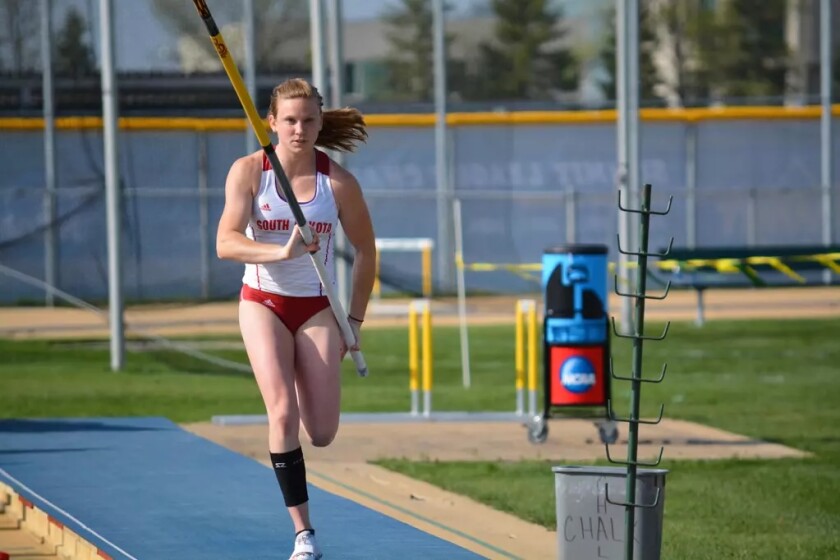
Dan Musilek / Summit League
Despite being a bit undersized, Grove was an intuitive pole vaulter, and her desire to get better outweighed any physical disadvantages. She made an immediate impact as a freshman, placing seventh at the NCAA Championships with a vault of 13-11. In total, she earned four top-10 finishes at the NCAA Championships during her collegiate career.
Since graduating from USD in 2017, Grove continues to shine on the international stage, with Miles by her side every step of the way.
“Derek has truly been the key to my success,” Grove said. “He’s a great mentor at life and on the track. He’s just super down to earth, calm. I can’t say enough good things about the guy. He’s kind of like my second dad at this point.
“We have a fantastic relationship. I respect him because if I don’t look good, he’s not going to tell me I look good, so then I can work on what I can do to make myself become a better athlete or a better person. … It doesn’t matter what you jump, that guy will be there for you.”
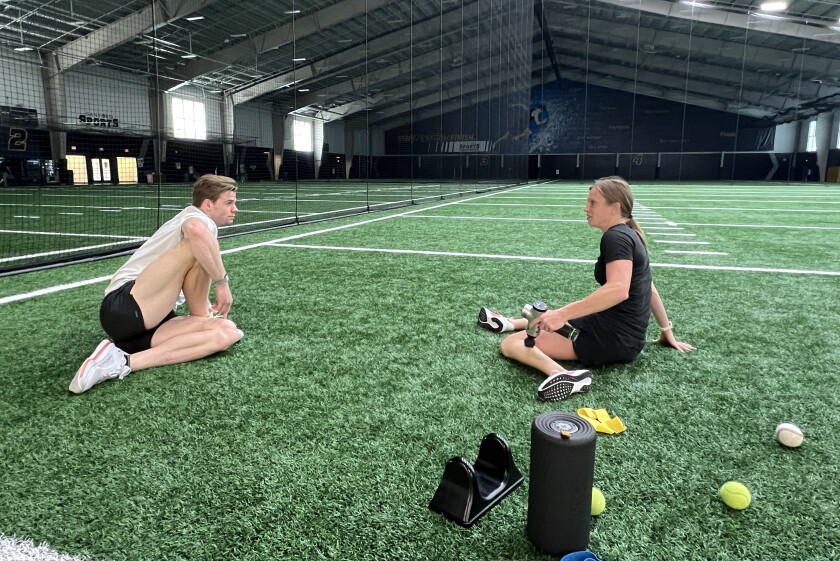
Trent Singer / Sioux Falls Live
Of course, no athlete in the history of the program — or perhaps the university at large — has gone on to elevate the Coyotes’ brand more than Nilsen, who set a national high school record in the vault with a clearance of 18-4 3/4 (5.61 meters) before he ever stepped foot on campus.
Nilsen was introduced to Miles after winning his first of two state championships in the vault as a junior at Park Hill High School (Kansas City, Missouri). Then, later that summer, when the recruiting window officially opened for the rising senior, Nilsen received a call from Miles, who was eager to show him what USD had to offer.
While being recruited, Nilsen talked to coaches from a number of established Power Five programs, but Miles’ messaging differed greatly in the sense that he was more invested in the individual rather than how many points he could potentially provide on the national stage.
“I was like, ‘Done,’” Nilsen said. “That’s all I’ve really wanted in a coach is someone who I can relate to and who can help me out in both life and in pole vaulting.
“I came here to South Dakota, and that’s kind of been the rest of it. I met my wife my senior year of college, and now we’re just living life.”

Kai Pfaffenbach / Reuters
During his four years at South Dakota, Nilsen was a six-time All-American and a three-time NCAA champion in the vault. He was a silver medalist in the pole vault at the 2020 Olympics in Tokyo and has claimed three medals at the World Championships.
“I think that’s what we have become is if you’re kind of psycho about pole vaulting and are willing to move to South Dakota to explore how good you can be, then I know you’re going all in,” Miles said. “I think that’s why the program has experienced some success is because these kids are willing to give up some things and move to this place to do this. When you have that type of work ethic and commitment, you’re bound to be successful even if I screw up or don’t know what I’m doing. The odds are pretty good.
“I think you take a little bit of Earl Bell’s mentoring and years in the sport and combine that with the work ethic and commitment that these kids have, and I think that’s kind of the magic of our program or at least my conceptual idea for the program.”
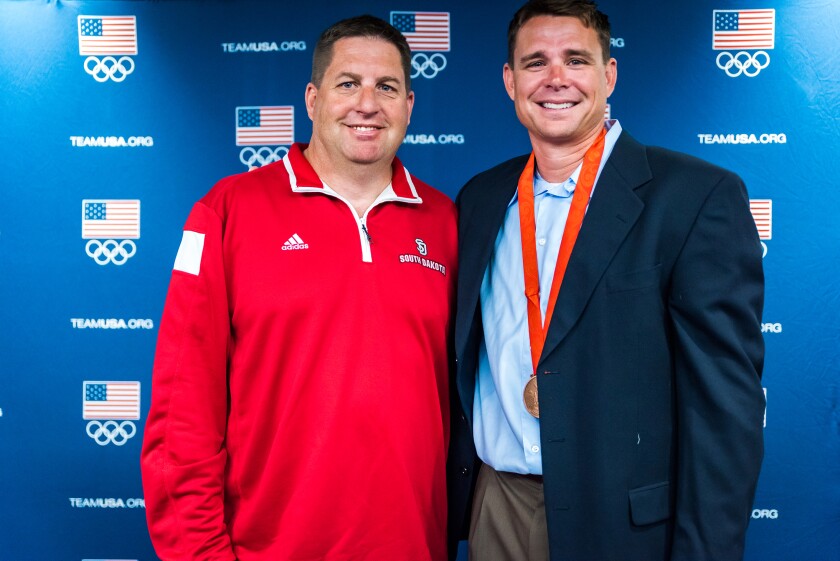
Thomas Hatzenbuhler / USD Athletics
Culture, commitment, consistency
A vaulting vision built on patience and purpose
Buell was a junior in 2013 when she became the Yotes’ first Division I national champion in the pole vault, and since then, the program has continued to ascend.
Just last season, freshman Anna Willis and senior Gen Hirata each earned All-America honors in the vault, finishing fourth and seventh, respectively, at the NCAA Outdoor Championships. A week later, Willis, who was recently tabbed as the 2025 Sioux Falls Live Women’s Track/Cross Country College Athlete of the Year, earned another national honor when she took first at the USA Track & Field Under 20 Championship.
But Miles isn’t only fixated on the successes of his top vaulters. He wants all of his athletes to be successful regardless of where they stack up among the group.
“It’s that passion to not necessarily see someone jump high but to see someone jump higher than they did before and keep improving and keep getting better,” Huber said. “His passion is part of it.
“He’s very intelligent. He’s had a lot of opportunities to bring together a lot of different pole vault experiences and to develop his own type of pole vaulting style that he feels really comfortable teaching.”
Both Grove and Nilsen continue to help coach the pole vaulters at USD when needed, and throughout the years, their relationship with Miles has evolved dramatically.
“It used to be kind of like a father figure, and then it turned into a fun uncle. And then it turned into big brother who’s kind of annoying sometimes,” Nilsen said with a laugh. “But hey, that’s what happens when you spend almost a decade with the guy.
“For us, it’s a professional relationship that is kept very lively and light, and it’s really worked out so far.”
Miles recognizes the responsibility thrust on him as a coach who’s responsible for his athletes’ development as young adults. Whether it’s on the track or in the classroom, there’s a certain level of accountability that’s required of him to ensure that attention is being given to all aspects of their lives.
For Miles, it all stems back to his time at Bell Athletics, where excellence became an entrenched expectation in his own journey through life.
“I think you have to have those kinds of life-teaching moments or mentoring or whatever you want to call it throughout college with every kid,” Miles said. “They’re always different, and I think that’s maybe where the father-figure thing comes into play. It’s just part of the job as a college coach to not only coach but to also get you through college, to get a degree, become a creative thinker and problem-solver and a contributor to society.
“I think that’s what I’m trying to do in these kids’ experiences is to move them through these parts of life.”
As the Yotes’ track program continues to elevate itself, the athletics administration has held up its end of the bargain as well.
Renovations to the east side of the DakotaDome, which includes the creation of a new indoor track facility, are sure to be a game-changer for the program. More detailed plans are expected to be unveiled this summer.
“I think when our administration, whether it’s President [Sheila] Gestring or President [James] Abbott, look at our track program, they know that there’s a group of coaches that are hardworking and are going to get the most out of their kids, love coaching and love recruiting kids to come to USD to have that experience of being able to be great, whether that’s in pole vaulting or running or jumping or throwing,” Huber said. “Derek’s the one who kind of sets that standard for all of us.”
For years now, Miles says he’s received offers to leave USD for other opportunities, but strong support from administrators and the chance to coach alongside his best friend mean too much to him.
“You cannot find a more supportive university to be able to do this stuff,” Miles said. “To get my Olympic medal, Senator [John] Thune got involved and tracked it down and got the medal for me. These things don’t happen outside the state of South Dakota and outside the University of South Dakota.
“For me, it’s a no-brainer. Now, I can go in and recruit who I want to recruit. I can get all the support I need. If it’s raining at the conference meet, we’ll set up the pole vault inside and have a meet where like eight of my kids PR at. It’s just a phenomenal experience, and I think the more I get excited about it, the more desire I have to stay and be a part of it.”
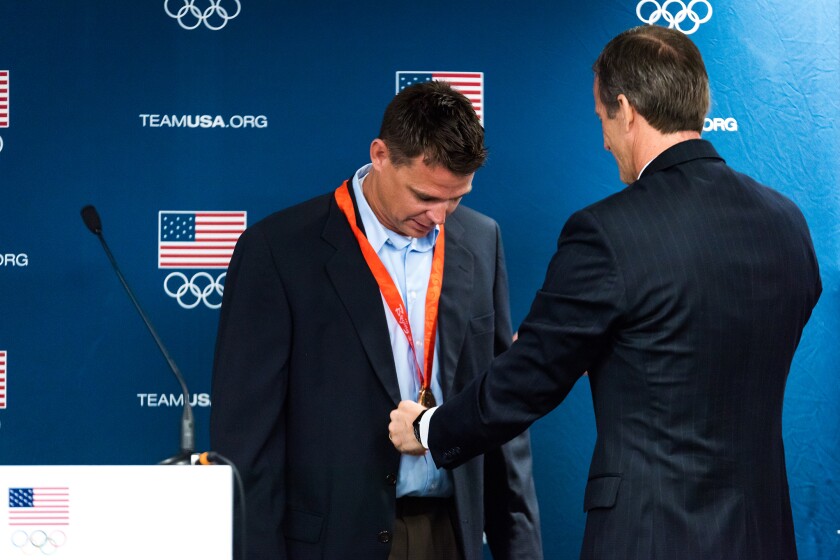
Thomas Hatzenbuhler / USD Athletics
In a sport often defined by flashes of brilliance and record-breaking moments, Miles has built his legacy on something less glamorous but more enduring: consistency.
Miles points to athletes like Grove, Hirata and Marleen Mülla as examples of his philosophy in action. They may not have been national champions, but they consistently reached national meets and performed at an All-American level. His coaching focus has always been on long-term development rather than short-term results.
The outcomes have been staggering. USD’s pole vault program keeps climbing — bar by bar, jump by jump.
“It’s really kind of an unshakeable process that he’s built in making a good culture at USD,” Nilsen said. “He knows what he’s doing, and he knows how to do it. He knows how to relate to every single kid. He cares about every single kid. I feel like that’s kind of the X-factor he’s had that not every coach has because you can learn how to write training, learn how to teach pole vaulting, watch as many videos and teach as many kids as you want, but if you don’t have that X-factor that he has, which is building a culture both around himself and around USD as a pole vault entity, then it’s not going to work as well as Derek has.
“He very much has been an X-factor in that realm.”
Sports
MN girls volleyball coach sentenced in federal court for sexual abuse
A longtime Twin Cities girls volleyball coach received a 33-year federal prison sentence Tuesday after sexually abusing and preying on multiple players for nearly a decade by pursuing them on social media and video recording some of the encounters. Dorian Christopher Barrs, 33, of Minnetonka will receive a lifetime sentence of supervised release after his […]
A longtime Twin Cities girls volleyball coach received a 33-year federal prison sentence Tuesday after sexually abusing and preying on multiple players for nearly a decade by pursuing them on social media and video recording some of the encounters.
Dorian Christopher Barrs, 33, of Minnetonka will receive a lifetime sentence of supervised release after his prison time. He pleaded guilty last year to two federal counts of producing child pornography in connection with the abuse that occurred from October 2014 through March 2024.
“The defendant abused a position of trust for both the victims and their families,” U.S. District Judge Nancy Brasel said in court, calling the offenses “every parent’s nightmare.”
Federal prosecutors said they have identified 19 underage victims targeted by Barrs, 14 of whom he coached. His coaching career included stints at Maple Grove High School, clubs Minnesota Select and Crossfire Volleyball and private lessons.
Prosecutors agreed not to seek a sentence longer than 35 years, according to his plea. Barrs’ defense attorneys called for 20 years in prison, stating the length was appropriate because it both “punishes and deters” him. In sentencing documents, Barrs’ attorneys said he has shown remorse for his actions and mentioned Barrs’ personal history of being sexually abused.
Dorian Christopher Barrs (Sherburne County )
“He is flawed and good at the same time. He must be punished and rehabilitated,” wrote Aaron Morrison, Barrs’ federal defender.
According to the charges, Barrs used Snapchat, text messages and other social media applications to lure the girls into sexual conversations. He would then coerce the players to produce child pornography and send the material to him. Barr is also accused of committing sex acts with five of the underage victims, prosecutors said in a news release.
Barrs also often “assumed the identity and Snapchat account of a minor victim … in order to attempt to and knowingly employ, use, persuade, induce, entice and coerce minor victims” into sending him explicit videos and images of themselves, his plea said. Barrs then sent the material to other victims to further his conversations.
Sports
At the Net: July 23, 2025
1 Day Left to Pre-Register for 2025 AVCA Coach of the Year Super Clinic!LAST CHANCE to Pre-Register for the AVCA Coach of the Year Super Clinic July 25-30. Access award-winning sessions created by current and past AVCA Coach of the Year award recipients and volleyball professionals. Registration includes on-demand access to the 2025 Super Clinic’s […]

1 Day Left to Pre-Register for 2025 AVCA Coach of the Year Super Clinic!
LAST CHANCE to Pre-Register for the AVCA Coach of the Year Super Clinic July 25-30. Access award-winning sessions created by current and past AVCA Coach of the Year award recipients and volleyball professionals. Registration includes on-demand access to the 2025 Super Clinic’s new sessions, plus access to Volleyball Coaches Insider +Plus, home of the 2024, 2023, 2022 and 2021 AVCA Super Clinic and other great full-length clinic sessions.
-

 College Sports2 weeks ago
College Sports2 weeks agoWhy a rising mid-major power with an NCAA Tournament team opted out of revenue-sharing — and advertised it
-

 Motorsports3 weeks ago
Motorsports3 weeks agoTeam Penske names new leadership
-

 Sports2 weeks ago
Sports2 weeks agoNew 'Bosch' spin
-

 Fashion1 week ago
Fashion1 week agoEA Sports College Football 26 review – They got us in the first half, not gonna lie
-

 Sports1 week ago
Sports1 week agoVolleyball Releases 2025 Schedule – Niagara University Athletics
-

 College Sports3 weeks ago
College Sports3 weeks agoMSU Hockey News – The Only Colors
-

 Sports2 weeks ago
Sports2 weeks agoE.l.f Cosmetics Builds Sports Marketing Game Plan Toward Bigger Goals
-

 Health1 week ago
Health1 week agoCAREGD Trademark Hits the Streets for Mental Health Month
-

 College Sports2 weeks ago
College Sports2 weeks agoBuford DB Tyriq Green Commits to Georgia
-

 Youtube2 weeks ago
Youtube2 weeks agoWill LeBron James request a trade? 🤔 Windy says MULTIPLE TEAMS would make offers 👀 | NBA Today










![[BINGO] PNC 2025 Survival Stage Day 1](https://yoursportsnation.com/wp-content/uploads/2025/07/bingo-pnc-2025-survival-stage-day-1-400x240.jpg)
![[BINGO] PNC 2025 Survival Stage Day 1](https://yoursportsnation.com/wp-content/uploads/2025/07/bingo-pnc-2025-survival-stage-day-1-80x80.jpg)














































